Tsh levels range for hypothyroid. TSH Levels for Hypothyroidism: Understanding Low and High TSH Ranges
What do abnormal TSH levels indicate. How are TSH levels related to thyroid function. What are the symptoms of high and low TSH. How is TSH testing used to diagnose thyroid disorders.
The Role of TSH in Thyroid Function
Thyroid stimulating hormone (TSH) plays a crucial role in regulating thyroid function and maintaining overall bodily homeostasis. Produced by the pituitary gland in the brain, TSH acts as a messenger, instructing the thyroid gland to produce more or fewer thyroid hormones – specifically triiodothyronine (T3) and thyroxine (T4).
These thyroid hormones are responsible for regulating numerous bodily functions, including:
- Metabolic rate
- Body temperature
- Brain development
- Heart rate
- Muscle strength
- Nervous system function
The relationship between TSH and thyroid hormones operates on a negative feedback loop. When thyroid hormone levels are low, the pituitary gland releases more TSH to stimulate increased production. Conversely, when thyroid hormone levels are high, TSH production decreases.
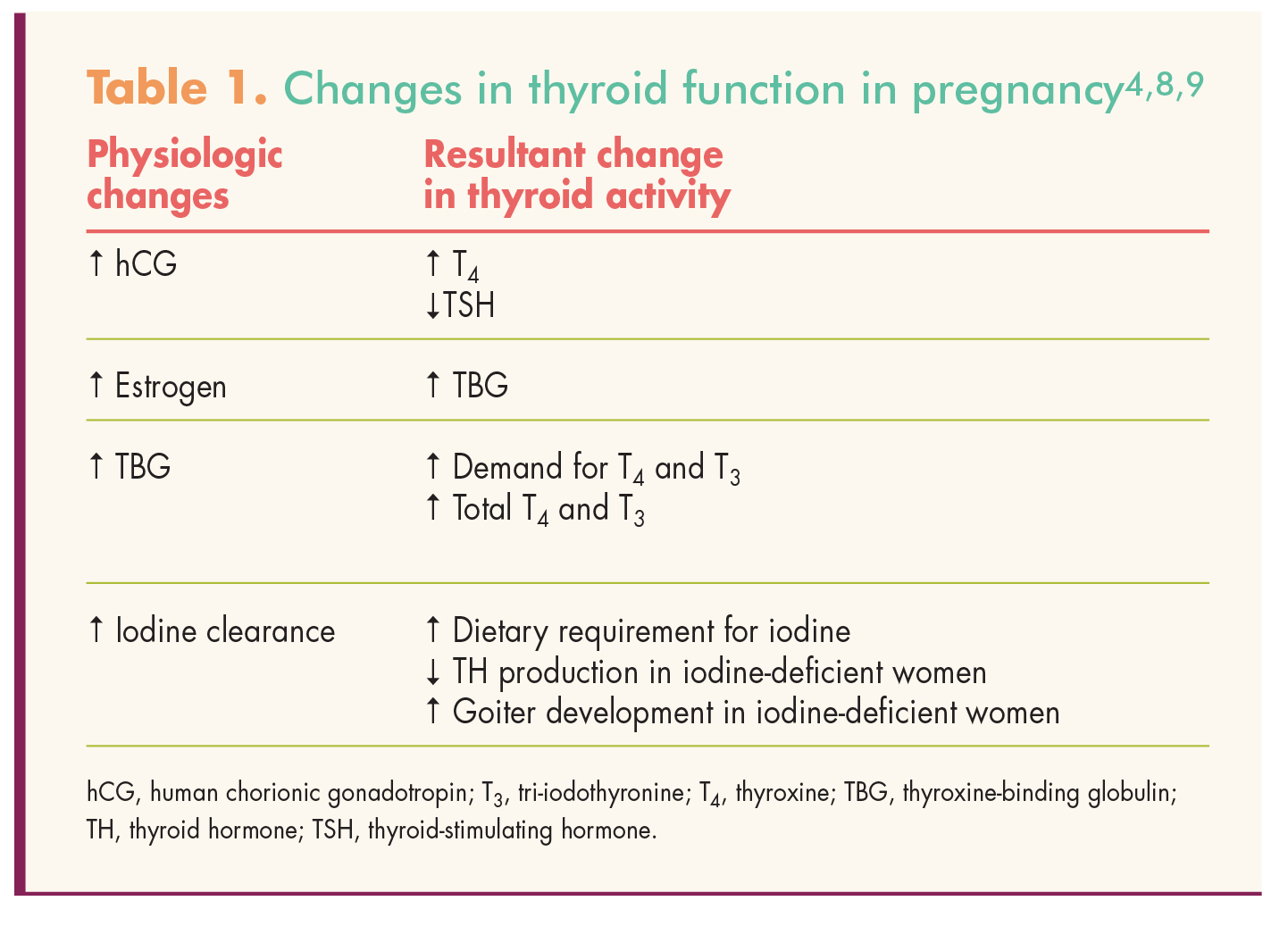
Normal TSH Ranges: A Debated Topic
Determining what constitutes a “normal” TSH level is an ongoing subject of debate in the medical community. While there is some variation between individuals, most healthcare providers consider the following ranges:
- Normal TSH range: 0.5 to 4.5 or 5.0 mIU/L
- Subclinical hypothyroidism: 4.5 to 10 mIU/L
- Overt hypothyroidism: Above 10 mIU/L
Is there a single TSH level that’s ideal for everyone? The answer is no. What’s considered normal can vary based on factors such as age, sex, and individual physiology. This is why it’s crucial for healthcare providers to consider TSH levels in conjunction with other thyroid function tests and clinical symptoms when making a diagnosis.
High TSH Levels: Causes and Implications
Elevated TSH levels often indicate an underactive thyroid gland, a condition known as hypothyroidism. In this scenario, the thyroid is not producing sufficient amounts of T3 and T4, prompting the pituitary gland to release more TSH in an attempt to stimulate thyroid hormone production.
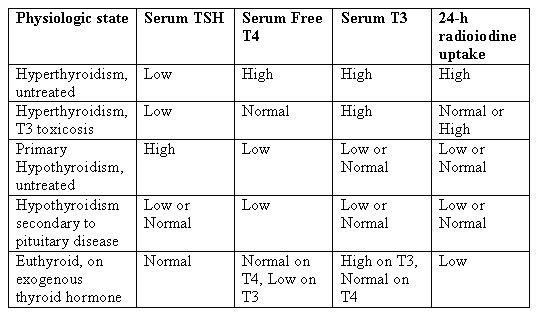
What are some common causes of high TSH levels?
- Hashimoto’s thyroiditis (an autoimmune disorder)
- Iodine deficiency
- Thyroid surgery
- Radiation therapy to the neck area
- Certain medications
Symptoms of High TSH and Hypothyroidism
Individuals with elevated TSH levels and hypothyroidism may experience a range of symptoms, including:
- Fatigue and weakness
- Weight gain
- Cold sensitivity
- Dry skin and hair
- Constipation
- Depression
- Muscle aches
- Irregular or heavy menstrual periods
It’s important to note that these symptoms can be nonspecific and may overlap with other conditions. This is why laboratory testing is essential for an accurate diagnosis.
Low TSH Levels: Understanding Hyperthyroidism
While the original text primarily focuses on high TSH levels, it’s equally important to understand the implications of low TSH levels. A low TSH reading typically indicates an overactive thyroid gland, a condition known as hyperthyroidism.
In hyperthyroidism, the thyroid gland produces excess thyroid hormones, leading to a suppression of TSH production by the pituitary gland. Common causes of hyperthyroidism include:
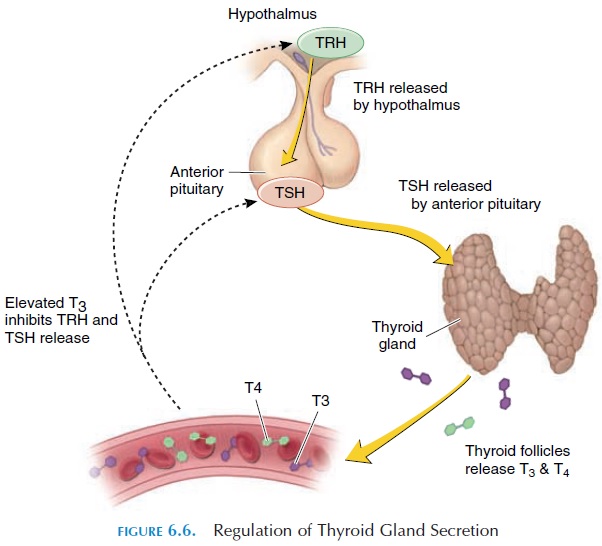
- Graves’ disease (an autoimmune disorder)
- Toxic nodular goiter
- Thyroiditis (inflammation of the thyroid gland)
- Excessive iodine intake
- Certain medications
Symptoms of Low TSH and Hyperthyroidism
Individuals with low TSH levels and hyperthyroidism may experience symptoms such as:
- Unexplained weight loss
- Rapid heartbeat or palpitations
- Increased appetite
- Nervousness and anxiety
- Tremors
- Sweating and heat intolerance
- Changes in menstrual patterns
- Fatigue and muscle weakness
As with hypothyroidism, these symptoms can be nonspecific, emphasizing the need for proper diagnostic testing.
The Importance of Comprehensive Thyroid Testing
While TSH levels provide valuable information about thyroid function, they don’t tell the whole story. Healthcare providers often rely on a combination of tests to accurately diagnose and manage thyroid disorders. These may include:
- Free T4 (FT4) test
- Total T3 test
- Thyroid antibody tests
- Thyroid ultrasound
Why is a comprehensive approach to thyroid testing necessary? TSH levels alone may not always reflect the full picture of thyroid function. For instance, in some cases, TSH levels may be normal while free T4 or T3 levels are abnormal, a condition known as subclinical thyroid dysfunction.
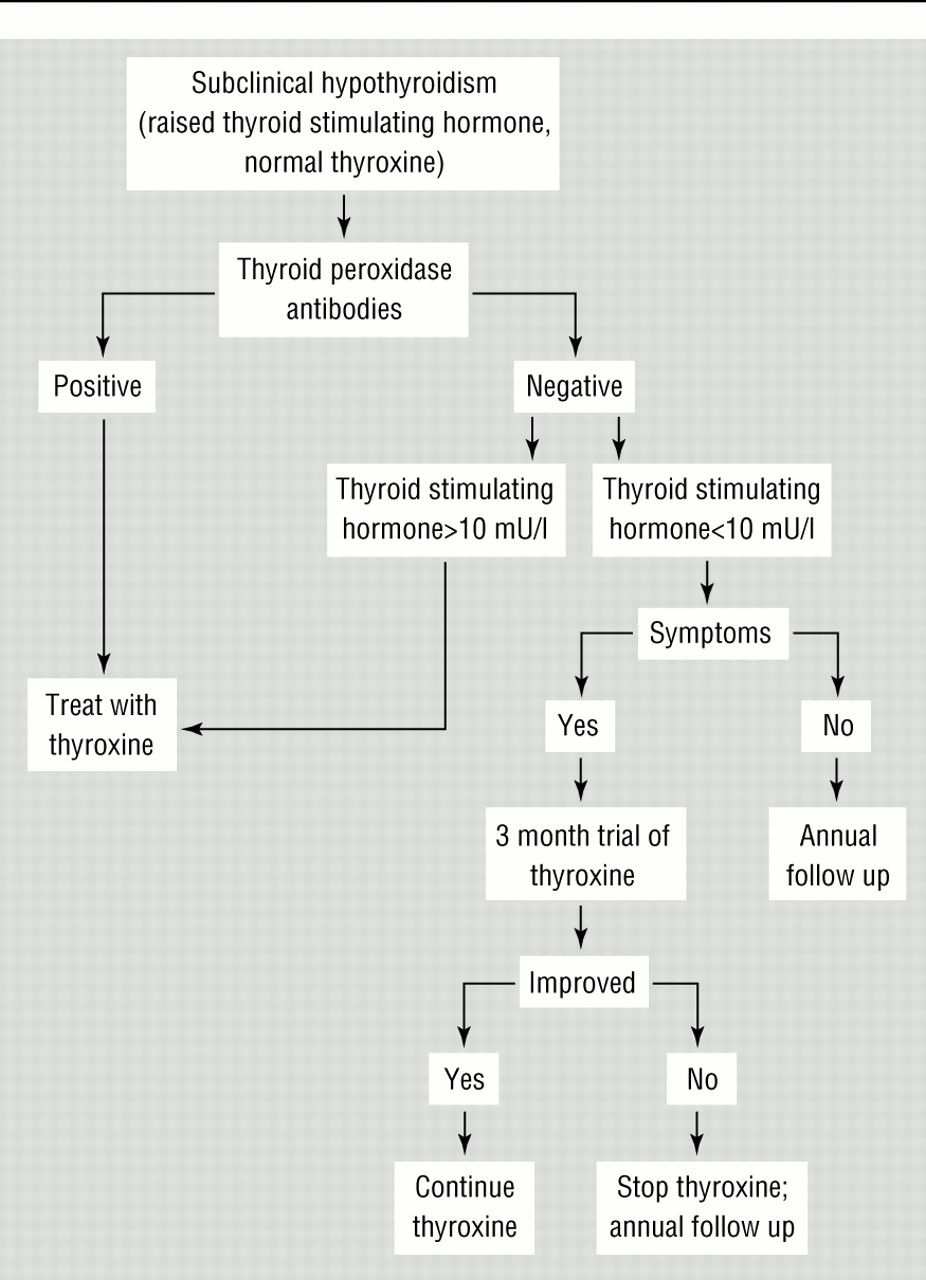
Additionally, factors such as medications, pregnancy, and certain medical conditions can affect TSH levels, potentially leading to misdiagnosis if TSH is the sole parameter considered.
Interpreting TSH Results: Beyond the Numbers
Interpreting TSH results requires more than just looking at the numbers. Healthcare providers must consider various factors when evaluating thyroid function, including:
- Patient symptoms and medical history
- Results of other thyroid function tests
- Presence of thyroid antibodies
- Medications and supplements the patient is taking
- Age and sex of the patient
- Presence of other medical conditions
How can patients ensure they receive a comprehensive thyroid evaluation? It’s essential to communicate clearly with your healthcare provider about your symptoms, medical history, and any medications or supplements you’re taking. This information, combined with appropriate laboratory testing, allows for a more accurate diagnosis and treatment plan.
Treatment Approaches for Thyroid Disorders
The treatment of thyroid disorders typically aims to restore normal thyroid hormone levels and alleviate symptoms. The approach varies depending on whether the patient has hypothyroidism or hyperthyroidism.
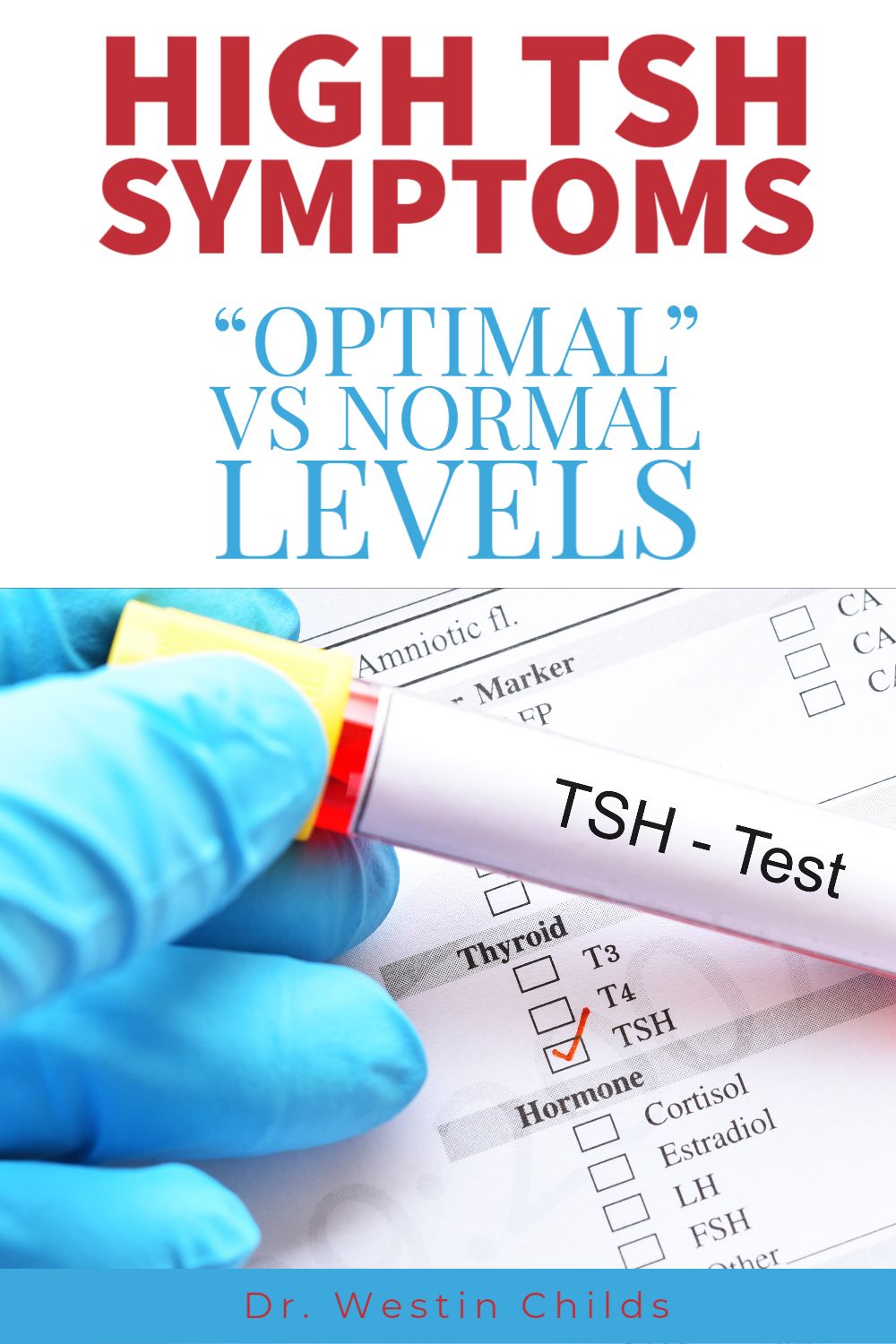
Treating Hypothyroidism
For individuals with hypothyroidism, treatment usually involves thyroid hormone replacement therapy. The most commonly prescribed medication is levothyroxine, a synthetic form of T4. The goal of treatment is to bring TSH levels into the normal range and alleviate symptoms.
How long does it take for thyroid medication to work? While some patients may notice improvements within a few weeks, it can take several months to achieve optimal thyroid hormone levels. Regular monitoring and dose adjustments are often necessary to find the right balance.
Treating Hyperthyroidism
The treatment of hyperthyroidism may involve one or more of the following approaches:
- Anti-thyroid medications to reduce hormone production
- Radioactive iodine therapy to destroy overactive thyroid cells
- Surgery (thyroidectomy) to remove part or all of the thyroid gland
- Beta-blockers to manage symptoms such as rapid heart rate
The choice of treatment depends on factors such as the cause and severity of hyperthyroidism, the patient’s age and overall health, and personal preferences.

Living with Thyroid Disorders: Lifestyle Considerations
While medication is often the primary treatment for thyroid disorders, lifestyle factors can also play a role in managing symptoms and supporting overall thyroid health. Some important considerations include:
- Nutrition: Ensuring adequate intake of iodine, selenium, and zinc, which are important for thyroid function
- Stress management: Chronic stress can affect thyroid function, so stress-reduction techniques may be beneficial
- Exercise: Regular physical activity can help manage weight, improve energy levels, and support overall health
- Sleep: Prioritizing good sleep habits, as thyroid disorders can affect sleep quality
- Avoiding endocrine disruptors: Minimizing exposure to certain chemicals that may interfere with thyroid function
How can patients best support their thyroid health through lifestyle changes? It’s important to work closely with your healthcare provider to develop a comprehensive management plan that includes both medical treatment and appropriate lifestyle modifications.

The Future of Thyroid Testing and Treatment
As our understanding of thyroid function continues to evolve, so do the approaches to testing and treatment. Some emerging areas of research and development include:
- More personalized reference ranges for TSH and thyroid hormones
- Advanced imaging techniques for thyroid evaluation
- Gene therapy approaches for thyroid disorders
- Development of new thyroid hormone analogs
- Improved understanding of the gut-thyroid axis and its implications for thyroid health
These advancements hold promise for more accurate diagnosis and tailored treatment strategies in the future. As research progresses, patients and healthcare providers alike can look forward to increasingly sophisticated and effective approaches to managing thyroid health.
Understanding TSH levels and their implications is crucial for diagnosing and managing thyroid disorders. While TSH testing is a valuable tool, it’s important to remember that it’s just one piece of the puzzle. A comprehensive approach that considers multiple factors – including additional thyroid function tests, clinical symptoms, and individual patient characteristics – is essential for optimal thyroid care. By staying informed and working closely with healthcare providers, individuals can take an active role in managing their thyroid health and overall well-being.
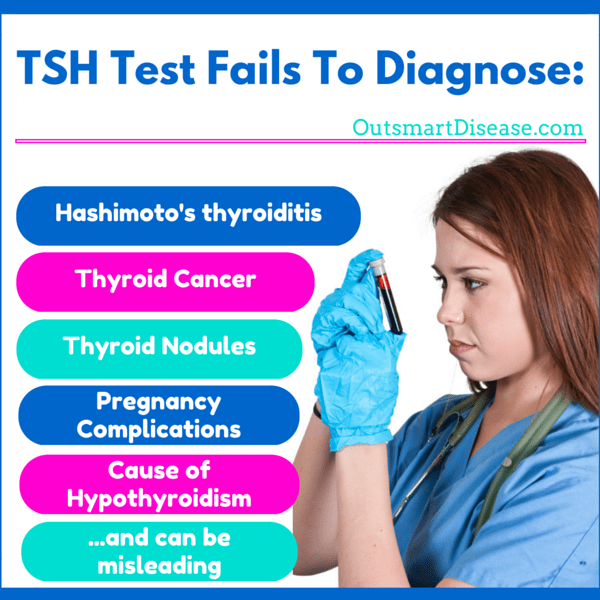
What Low TSH or High TSH Levels Could Mean
It’s important to look not only at TSH test results, but also free T4 and total T3 (your thyroid hormones), in determining whether you have a problem with your thyroid. iStock.com/Md Saiful Islam Khan
Think of your thyroid gland as a clearinghouse in which information runs in and out, to make sure your entire body achieves the balance of homeostasis.
Thyroid stimulating hormone (TSH) is produced by your brain’s pituitary gland and sent to your thyroid, to make sure that a state of equilibrium known as homeostasis occurs.
TSH tells your thyroid to produce more or fewer hormones, specifically triiodothyronine (T3) and thyroxine (T4), to make sure you’re operating optimally. These two hormones regulate many important aspects of your body, including metabolic rate, body temperature, and brain development.
Because the right amounts of T3 and T4 are responsible for helping maintain a smoothly functioning body in so many ways, understanding high, low, and normal levels of TSH is vital.
What Is Homeostasis?
Homeostasis and the endocrine system are based on a negative feedback system. When any end organ produces a hormone, these hormones then make their way back to the hypothalamus and the pituitary gland, so that the brain and pituitary gland know there’s an adequate amount of hormone being made.
If one of these organs is damaged, such as in autoimmune thyroid disease, and the thyroid gland is no longer making an adequate amount of thyroid hormone, this lower level is then detected by the hypothalamus in the brain. Therefore, a large amount of TSH is released in an attempt to produce more thyroid hormone from the thyroid gland.
What to Know About TSH Levels
Most commonly, providers use TSH levels to guide therapy to ensure that a person is producing the right levels of thyroid hormone. It’s important to look not only at TSH test results, but also free T4 and total T3, which could provide more accurate numbers and present a more comprehensive picture of what’s going on and for your doctor to figure out the right treatment plan.
In addition to blood tests, it’s important that your doctor knows the full picture of your presenting symptoms and when they occur, plus any medications or supplements you may be taking. To get to the bottom of what your issue may be, it’s possible that your doctor may order further tests, including a thyroid ultrasound.
Since TSH is responsible for the creation of hormones T3 and T4, which help regulate so much of your body, and because there are so many factors at play in creation or suppression of these hormones, using TSH data serves as the beginning of any thorough diagnosis and treatment plan. It can be confusing, especially considering what’s really a normal range for one person is not for another, and that levels will shift for many reasons.
For example, Joseph Winchell, M.D., family medicine physician at Mount Carmel Medical Group in Pickerington, OH, references a situation in which suppressed TSH is shown via testing. The physician’s initial reaction would be to reduce therapy.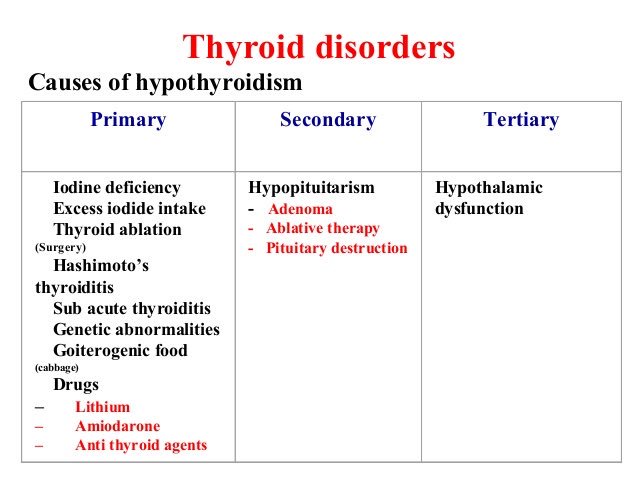 However, after checking free T4 or total T3, the full picture shows levels in the normal range.
However, after checking free T4 or total T3, the full picture shows levels in the normal range.
What are Normal TSH Levels?
It’s an ongoing debate. Ultimately, the standard of care is to treat into the goal range for TSH, which is typically between 0.5 and 4.5 or 5.
A TSH level of 10 mIU/L or higher is typically indicative of hypothyroidism. A TSH level of 4.5 to 10 mIU/L is considered indicative of subclinical hypothyroidism.
If you visit your doctor complaining of thyroid issues, worried by symptoms such as fatigue and the inability to lose weight, it’s important to remember that, while thyroid function plays a role in both your energy levels and your ability to gain or lose weight, there are a lot of other factors that need to be considered.
Being tired all the time does not necessarily mean you have a thyroid condition, just as being cold does not automatically mean you have hypothyroidism. An inability to lose weight or gaining excessive weight does not mean your thyroid is abnormal.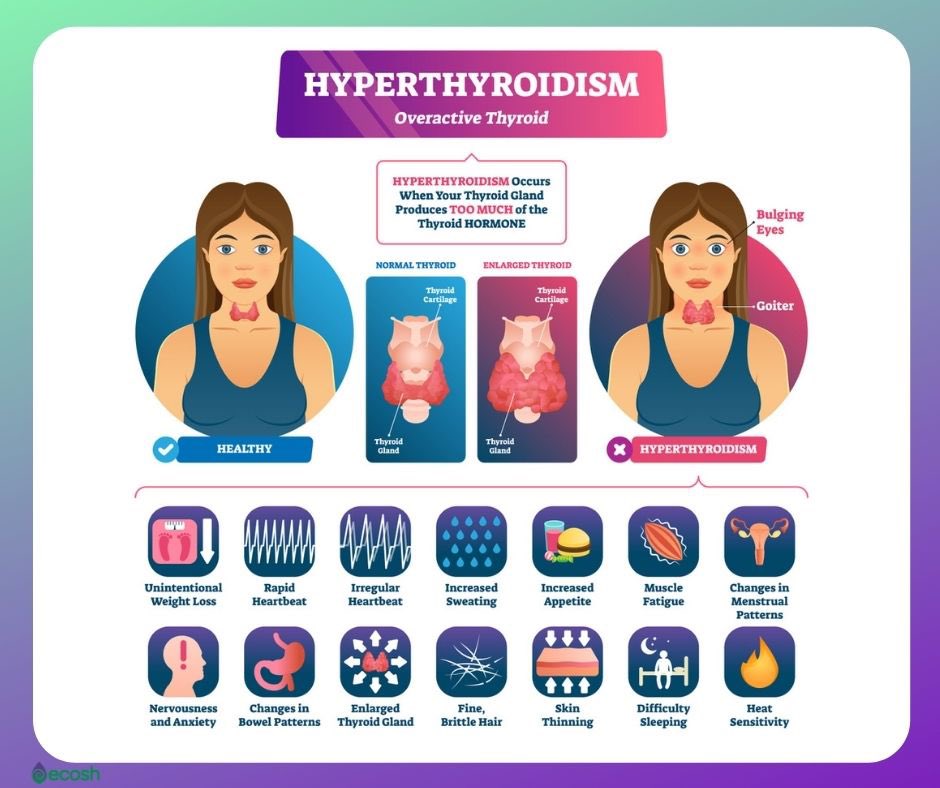 So while it’s appropriate to check in these situations, patients should realize there are a lot of other factors that could be going on, and a wider differential needs to be looked at when you’re having these concerns.
So while it’s appropriate to check in these situations, patients should realize there are a lot of other factors that could be going on, and a wider differential needs to be looked at when you’re having these concerns.
What Could High TSH Levels Mean?
Suffering from high TSH typically means one of two things, according to Dr. Winchell.
Hypothyroidism
The most common is an underactive thyroid gland, or hypothyroidism. If your thyroid is not producing enough thyroid stimulating hormone, your pituitary gland is going to release more TSH to try to get more T3 and T4 from the thyroid gland.
It’s a little tricky to wrap your head around, but having high TSH levels indicates low levels of T3 and T4.
High TSH Levels Symptoms
When a patient reports symptoms that include sudden weight gain, fatigue, low energy, irregular periods, or problems with sleep, it’s possible that this is because of high TSH. Because symptoms of having high TSH are also common symptoms for other conditions, the only way to know is to have a doctor provide a blood test to check your TSH levels.
Looking at cumulative symptoms over time is also valuable for helping reach a diagnosis.
Euthyroid Sick Syndrome
Another common diagnosis of high TSH comes from nonthyroidal illnesses, otherwise known as euthyroid sick syndrome. In this instance sick people, frequently those hospitalized in the ICU, are producing less T3 or T4 because of the illness that they’re suffering from.
What Could Low TSH Levels Mean?
Unlike high TSH, in which only a few conditions present themselves for relatively straightforward diagnoses, there are many reasons for low TSH. Low TSH means higher levels of T3 and T4 produced by the thyroid gland.
Graves’ Disease
The most common diagnosis is Graves’ disease, which triggers hyperthyroidism. Put simply, that means an overactive thyroid. In this autoimmune disorder, the thyroid becomes overactive because it is attacked by the body’s immune system.
Central Hypothyroidism
Another example is a syndrome called central hypothyroidism. In this case, your TSH may be low, but you’re considered to have hypothyroidism because of damage to the pituitary gland. In this example, the gland is not making enough TSH to adequately stimulate the thyroid gland to produce T3 and T4. It’s a bit of a challenge to diagnose, and there’s more work-up to figure it out.
In this case, your TSH may be low, but you’re considered to have hypothyroidism because of damage to the pituitary gland. In this example, the gland is not making enough TSH to adequately stimulate the thyroid gland to produce T3 and T4. It’s a bit of a challenge to diagnose, and there’s more work-up to figure it out.
Overmedication
Exogenous thyroid use could also lead to a diagnosis of low TSH. This can happen from either taking too much thyroid hormone replacement medication or from abusing thyroid hormone medication, which could lead to suppressed TSH.
Notes: This article was originally published February 1, 2022 and most recently updated July 19, 2022.
Our Review Process
Subclinical Hypothyroidism: Symptoms, Causes, and Treatment
Your thyroid plays an important part in your overall health, exerting influence over everything from your metabolism to your mood. Abnormal thyroid hormone levels can lead to a bunch of health issues, from fatigue and joint pain to fertility issues and heart disease. In other words, that tiny thyroid gland at the base of your neck has a big job.
In other words, that tiny thyroid gland at the base of your neck has a big job.
If you’ve been diagnosed with subclinical hypothyroidism—an early form of hypothyroidism, or underactive thyroid—it means your thyroid hormone levels are somewhat abnormal, but not enough to qualify as hypothyroidism. The condition affects 4.3% of the US population, according to a 2020 review article in the Journal of the American Academy of Physician Assistants, and is more common in older adults than in younger people.
In order to better understand subclinical hypothyroidism (sometimes called mild hypothyroidism or pre-hypothyroidism), a quick science lesson should help: Your thyroid gland, pituitary gland (in your brain), and hypothalamus (also in the brain) all work together as a sort of thyroid control panel. Together, they produce something called thyroid stimulating hormone (TSH). This hormone is responsible for “stimulating” the production of two main thyroid hormones, triiodothyronine (known as T3) and thyroxine (known as T4).
When TSH is released, it triggers the thyroid to produce T3 or T4. When there’s not enough T3 or T4 circulating in the body, more TSH is released; when there’s enough or too much thyroid hormone circulating, the pituitary releases less TSH. It’s a finely tuned feedback loop.
Hypothyroidism or subclinical hypothyroidism occur when something goes amiss with this system and the thyroid stops producing enough thyroid hormone to meet the body’s needs.
If your hormone levels are only mildly abnormal, you may have no obvious symptoms. If you do experience symptoms, they could be vague or might mimic other health issues. As in full-on hypothyroidism, symptoms you may experience include:
Depression or other mood issues
Fatigue
Weight gain
Feeling of being cold no matter how warmly you’re dressed
Gut issues, like constipation
An enlarged thyroid gland, or goiter, which may appear as a lump or swelling at the front of the neck
The same culprits behind full-blown hypothyroidism can cause subclinical hypothyroidism. These include:
These include:
Autoimmune Disease
Hashimoto’s thyroiditis is one of the most common causes of hypothyroidism. This autoimmune disorder occurs when your immune system attacks the body tissues, specifically the thyroid gland. If you have a family history of autoimmune thyroid disease, this increases your risk. Environmental factors can also trigger autoimmune disease, but researchers aren’t entirely sure how.
Medication
Certain medications have the potential to impact your thyroid function, including cardiac medications and some steroids, neurologic drugs, and pain relievers.
Treatment for Hyperthyroidism or Head or Neck Cancer
If you were previously treated for hyperthyroidism (overactive thyroid), there’s a chance that overtreatment with radioactive iodine or antithyroid medicine could have led to subclinical hypothyroidism or hypothyroidism. Radiation treatment for cancer in the head or neck area can impact the thyroid as well.
Thyroid Surgery
Treatment for certain thyroid conditions, including thyroid cancer and thyroid nodules, sometimes requires surgical removal of part or all of the thyroid gland, called a thyroidectomy. Depending on how much of the gland is removed (and therefore the number of thyroid hormone-producing cells remaining in the body), thyroidectomy can lead to subclinical or overt hypothyroidism.
Depending on how much of the gland is removed (and therefore the number of thyroid hormone-producing cells remaining in the body), thyroidectomy can lead to subclinical or overt hypothyroidism.
In addition to these direct causes, several risk factors for subclinical hypothyroidism have been identified. According to the Mayo Clinic, you have a higher likelihood of developing subclinical hypothyroidism if you:
Are a woman
Are over the age of 60
Have been pregnant or given birth to a baby within the last six months
According to Sapna Shah, M.D., an endocrinologist with the online-based practice Paloma Health, which specializes in treating hypothyroidism, “subclinical hypothyroidism occurs when FT4 [free T4] is in the normal range but the TSH is elevated.” FT4 is a form of T4 that circulates around the body and can freely enter body tissues as needed.
This is why the condition is called subclinical; the thyroid hormones are within a normal range. Since only the TSH is elevated, the issue doesn’t meet the criteria for a definitive thyroid disorder.
Since only the TSH is elevated, the issue doesn’t meet the criteria for a definitive thyroid disorder.
However unwell a patient might feel, symptoms alone are not enough to go on for a subclinical hypothyroidism diagnosis, Dr. Shah says. That’s why blood testing is key: “It’s really the lab results that give us the answer.”
Most labs say that a normal serum TSH level is somewhere between 0.4 to 4.0 mIU/L, and that a TSH level of 10 mIU/L or higher is indicative of hypothyroidism. A TSH level of 4.5 to 10 mIU/L is considered indicative of subclinical hypothyroidism.
Thyroid Hormone Reference Ranges
You may notice that what constitutes a “normal” reference range for TSH and other thyroid hormone levels differs, depending on the source. Not every lab or every medical practitioner agrees on what “normal” or “abnormal” looks like.
Experts have debated, a lot, whether the normal TSH reference range should remain the same or be made even narrower. For example, some research suggests—and some experts believe—that the range for “normal” TSH should be narrowed to 0.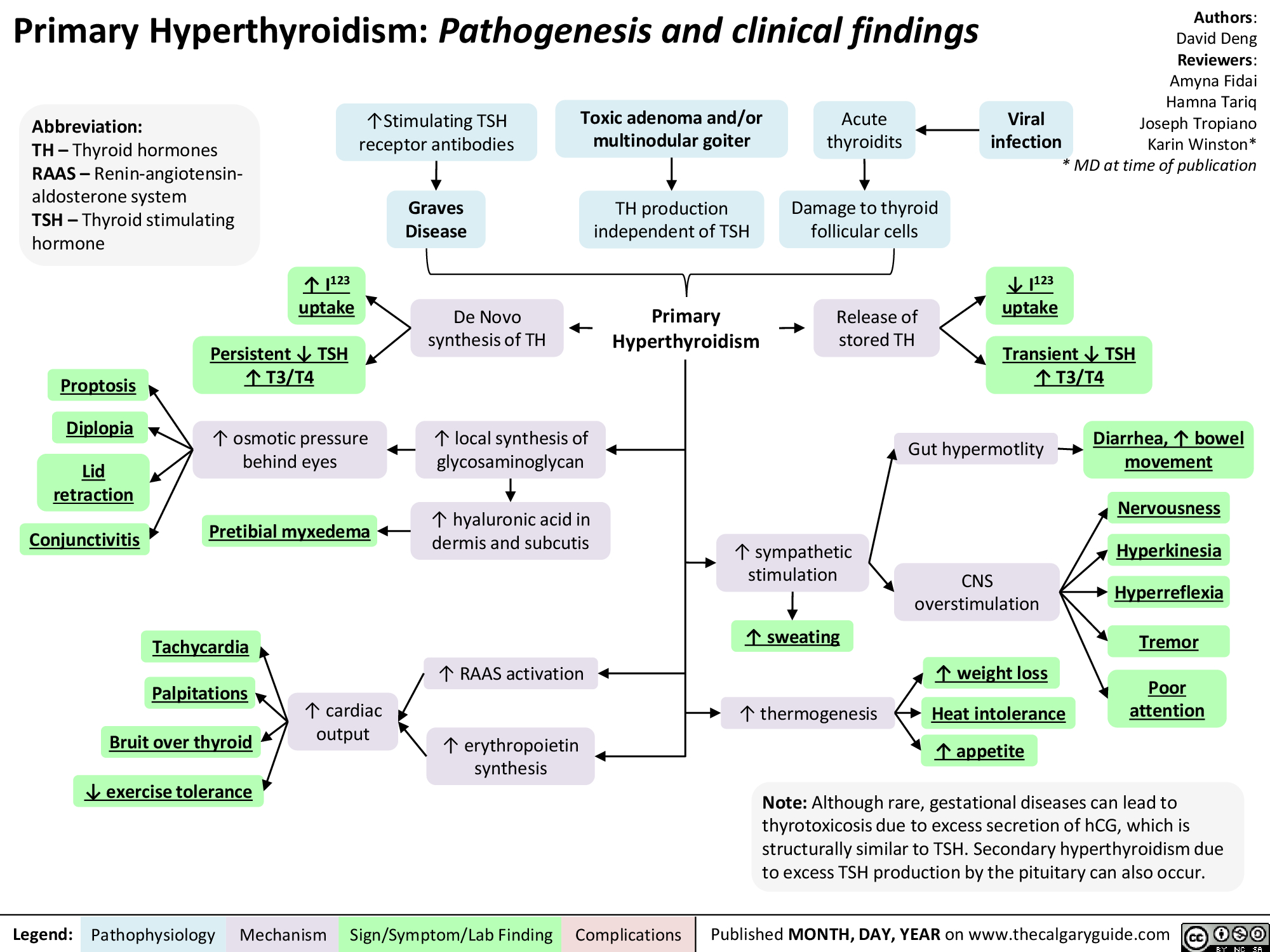 4 to 2.5 instead of 0.4 to 4.0.
4 to 2.5 instead of 0.4 to 4.0.
Medical practitioners have described the question of whether and how to treat subclinical hypothyroidism as, well, controversial. Researchers are unsure as to whether treating the condition (which involves thyroid hormone replacement therapy) actually benefits most patients with subclinical hypothyroidism, due largely to the condition’s asymptomatic nature, according to the Journal of the American Academy of Physician Assistants article noted above.
For this reason, Dr. Shah says, “not everyone with SCH should be treated. Almost all patients with TSH levels greater than 10 should be treated, and most patients with a TSH less than 4.5 should not be treated—except in the case of patients experiencing infertility or attempting pregnancy.”
But what about the gray zone between 4.5 and 10? This is where other factors come into play, Dr. Shah explains. For these patients, “[treatment] really depends on other risk factors, such as age, symptoms, and presence or absence of cardiovascular disease.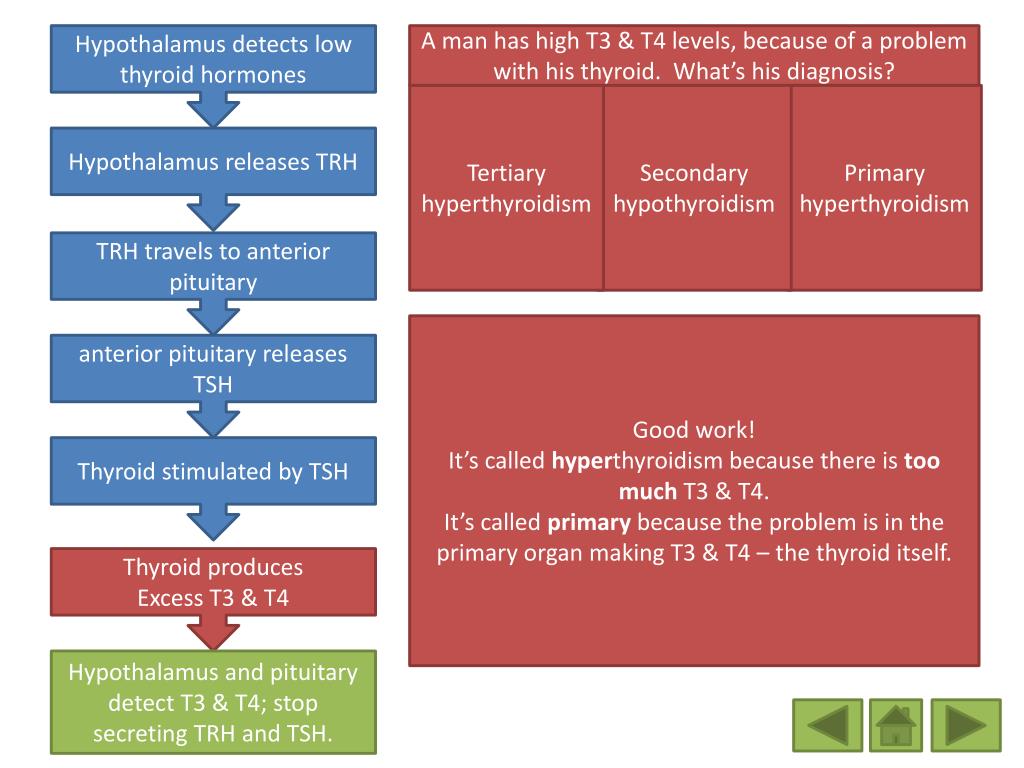 ”
”
A TSH over 10 mIU/L has been linked to an increased risk of coronary heart disease and heart failure, which is why you’ll probably want to seek treatment if your TSH is close to (but still under) that upper limit.
If your doctor decides to prescribe medication, “T4-only products such as levothyroxine are recommended for first-line treatment,” Dr. Shah says. “Typically we would start at the lowest possible dose to avoid overtreatment, especially in older people or those with underlying heart disease.”
Dr. Shah says your TSH levels should be checked again six to 12 weeks after initiation of levothyroxine therapy. From there, your health care provider will adjust your prescription as necessary. Going forward, “labs should be repeated around six months to assess for stability and then annually thereafter if the TSH level is stable,” Dr. Shah says.
Can Subclinical Hypothyroidism Turn into Full-Blown Hypothyroidism?
Even though this worry is totally valid, subclinical hypothyroidism isn’t always a definite path to hypothyroidism—even if it goes untreated. In fact, a small older study in The Journal of Clinical Endocrinology and Metabolism found that only about 27% of people over the age of 55 with subclinical hypothyroidism developed overt hypothyroidism.
In fact, a small older study in The Journal of Clinical Endocrinology and Metabolism found that only about 27% of people over the age of 55 with subclinical hypothyroidism developed overt hypothyroidism.
Another study, in JAMA Internal Medicine, followed 422,242 people with subclinical hypothyroidism who were not treated with thyroid-specific medications and found that a whopping 62% had normal TSH levels within five years. In other words, their subclinical hypothyroidism improved on its own over time, with no medical intervention. This study classified subclinical hypothyroidism as a TSH level of 5.5 to 10 mlU/L.
The thyroid hormones T3 and T4 play a key role in reproductive health, and thyroid dysfunction is a common cause of infertility. For this reason, Dr. Shah explains, you might consider treatment of a TSH level of under 4.5 mlU/L if you are trying to get pregnant or are experiencing infertility (whereas otherwise there’s really no reason to treat a TSH level this close to the cutoff for normal, which is 4. 0).
0).
The American Thyroid Association (ATA) recommends that women of childbearing age with TSH levels between 2.5 and 10 be tested for thyroperoxidase (TPO) antibodies, which are common in individuals with hypothyroidism and are an indicator of autoimmune thyroid disease.
If TPO antibodies are positive, treatment should be considered even if the TSH level is between 2.5 and 4.0, which would typically be considered “normal.”
If no TPO antibodies are found, whether or not to seek treatment may come down to other health and risk factors. It’s important to work closely with a reproductive endocrinologist to make the best decisions for you.
The good news is, research has shown that treating hypothyroidism (either subclinical or overt) often effectively treats infertility. In a study in the International Journal of Applied & Basic Medical Research, among women with infertility and elevated TSH levels, more than three-quarters were able to get pregnant within a year after starting hypothyroid treatment.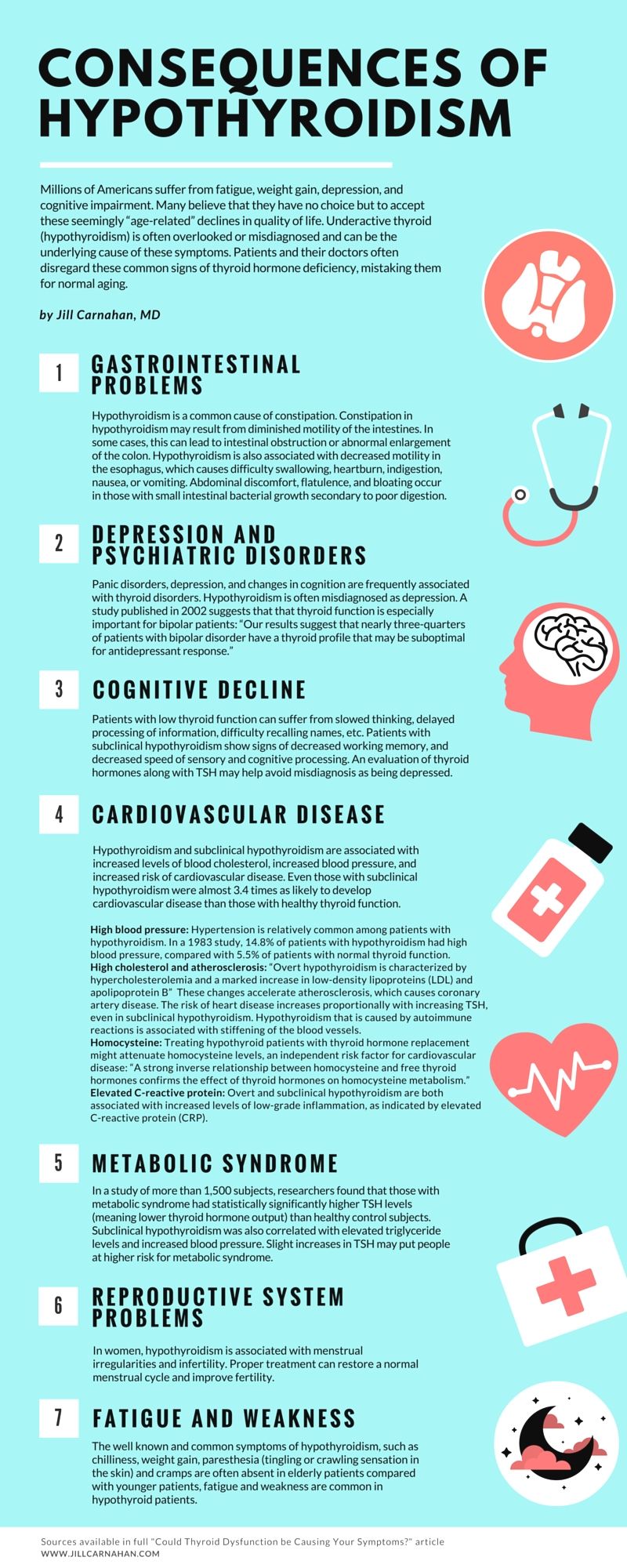
Questions to Ask Your Doctor
Questions to Ask Your Doctor About Subclinical Hypothyroidism
Because thyroid levels can be confusing and aren’t universally agreed upon, it’s important to bring up any questions you may have with your doctor. These may include:
What thyroid level reference range do you use, and how up-to-date is it?
Would you consider my TSH level mildly elevated or closer to full-blown hypothyroidism?
Are all of my other thyroid hormone levels normal?
What can I do to better manage my thyroid health?
How often should I come in to test my TSH level?
Are there other laboratory tests I should take to rule out other conditions that could explain my symptoms?
Notes: This article was originally published January 14, 2022 and most recently updated March 15, 2022.
Our Review Process
Subclinical hypothyroidism – a modern view of the problem | Shestakova T.
 P.
P.
For citation. Shestakova T.P. Subclinical hypothyroidism – a modern view of the problem // BC. 2016. No 1. P. 6–8.
The increased interest in subclinical hypothyroidism (SCHT) is due to the fact that the prevalence of this disease is much higher than the prevalence of overt hypothyroidism [1–3]. HTS is a condition in which elevated levels of thyroid-stimulating hormone (TSH) and normal levels of thyroid hormones (T3 and T4) are detected. There are usually no symptoms specific to hypothyroidism [4].
It is well known that there is an inverse relationship between thyroid hormones and TSH. Then the question arises of how, with a normal level of thyroid hormones, TSH is disinhibited and its level in the blood rises.
According to S. Andersen et al., the individual level of T4 changes in a narrower range than the normal values for the general population. Therefore, a deviation from the individual norm, even if it occurs within the reference values, is manifested by a noticeable increase in the level of TSH [5, 6].
Epidemiology and etiology of SGTS
The prevalence of SCHT has been studied in several large studies and, according to various sources, is 4–15%. In the Wickham study (Great Britain), which included 2779 people, the prevalence of SCHT, as well as overt hypothyroidism, was higher in women – 8%, but in men it was quite high and amounted to 3.5% [3]. In a survey of 25,686 people in the Colorado Study (USA), the prevalence of SCHT without sex separation was 9.5%, and in another American study (NHANES III), when examining more than 16,000 people, 4.5% were diagnosed with SCHT [1, 2].
The cause of SCHT in the vast majority of cases is autoimmune thyroiditis. However, there may be other reasons for the increase in TSH levels, and in some cases the changes are reversible, and there is a complete restoration of thyroid function. Such reasons include subacute and asymptomatic thyroiditis, a period of recovery after serious illness. In addition, some drugs can alter thyroid function, causing subclinical or overt hypothyroidism.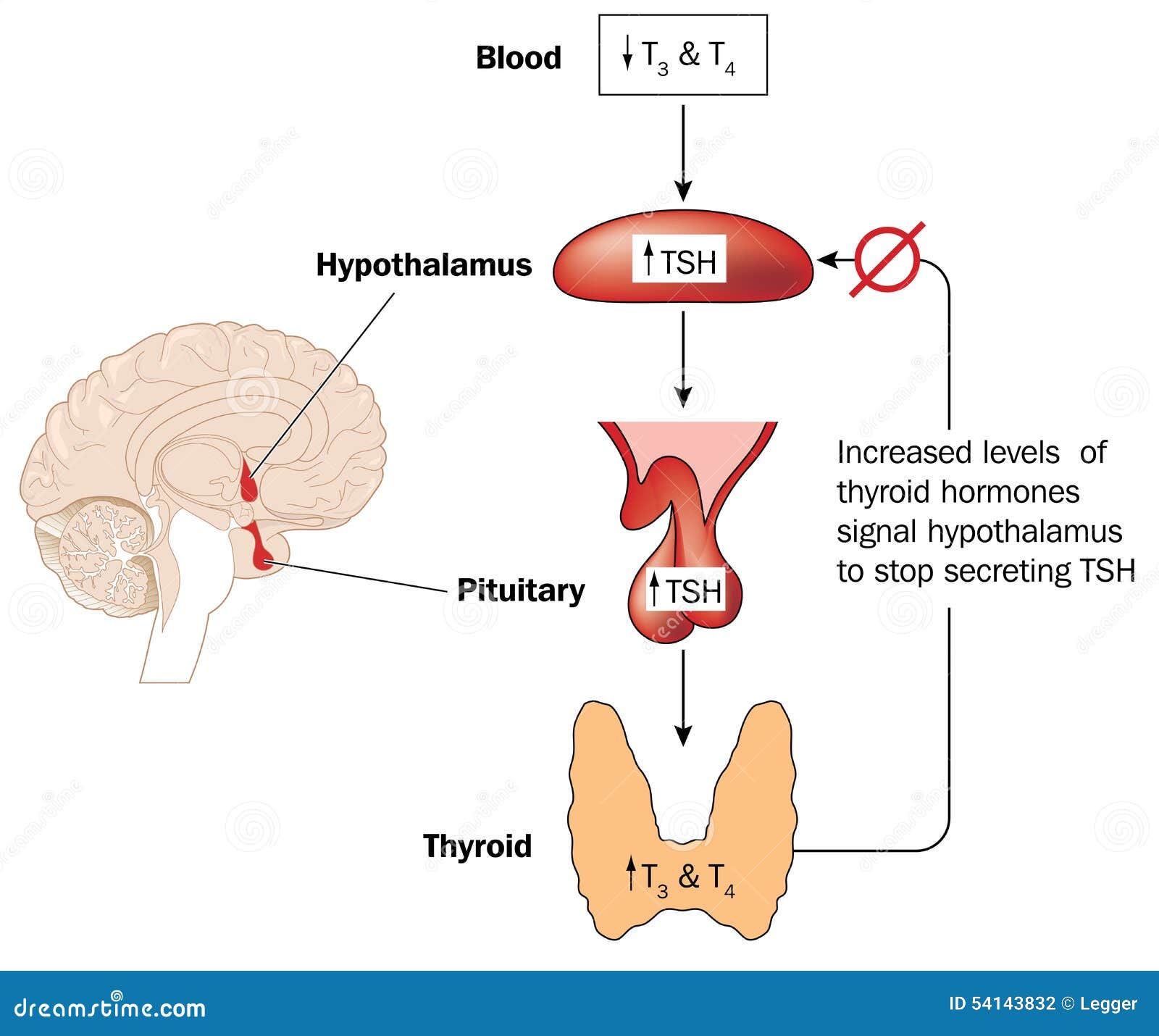 These include lithium preparations, which disrupt the secretion of thyroid hormones, and amiodarone, the effect of which on the thyroid gland is diverse, but HSGT develops as a result of drug-induced thyroiditis [7].
These include lithium preparations, which disrupt the secretion of thyroid hormones, and amiodarone, the effect of which on the thyroid gland is diverse, but HSGT develops as a result of drug-induced thyroiditis [7].
In addition, studies have shown that TSH levels are affected by old age (over 80 years), obesity, and some conditions that disrupt the circadian rhythm, such as night work, depression, and anxiety disorder [7]. In the NHANES III study, the median TSH (2.5 and 97.5 percentiles) for the age of 20-29 years was 1.26 (0.4-3.56) mU / l, which corresponds mainly to the accepted normal values, while for age ≥80 years – 1.9 (0.33–7.5) mU/l [1]. Thus, the frequency of SCGT may be overestimated in the elderly.
Data on the relationship between TSH levels and body mass index (BMI) are contradictory [8, 9]. A clear dependence of body weight on the level of TSH has not been proven. Currently, there are no randomized trials on the effect of replacement therapy with levothyroxine sodium on BMI. But an inverse relationship between TSH levels and BMI has been shown in many studies. Janssen I. demonstrated a decrease in TSH levels to normal levels in 87% of patients with HSGT and grade 3 obesity after bariatric surgery [10]. A similar result was obtained by Abu-Ghanem Y. et al., but only in patients with obesity and normal thyroid function. With a decrease in BMI after a longitudinal resection of the stomach from 42.4 to 32.5 kg/m2, there was a decrease in the level of TSH within the reference interval without changing the level of s. T4 [11].
But an inverse relationship between TSH levels and BMI has been shown in many studies. Janssen I. demonstrated a decrease in TSH levels to normal levels in 87% of patients with HSGT and grade 3 obesity after bariatric surgery [10]. A similar result was obtained by Abu-Ghanem Y. et al., but only in patients with obesity and normal thyroid function. With a decrease in BMI after a longitudinal resection of the stomach from 42.4 to 32.5 kg/m2, there was a decrease in the level of TSH within the reference interval without changing the level of s. T4 [11].
Progression of SKGT to overt hypothyroidism
Since SCHT can be considered as the initial phase of overt hypothyroidism, the question of the rate of decline in thyroid function and progression of SCHT to overt hypothyroidism is of interest. The Wickham Study showed that the rate of progression to overt hypothyroidism depends on the presence of antithyroid antibodies. In patients with an elevated TSH level, but with a normal titer of antibodies to thyroperoxidase (TPO), overt hypothyroidism developed in 33% of patients over 20 years of follow-up.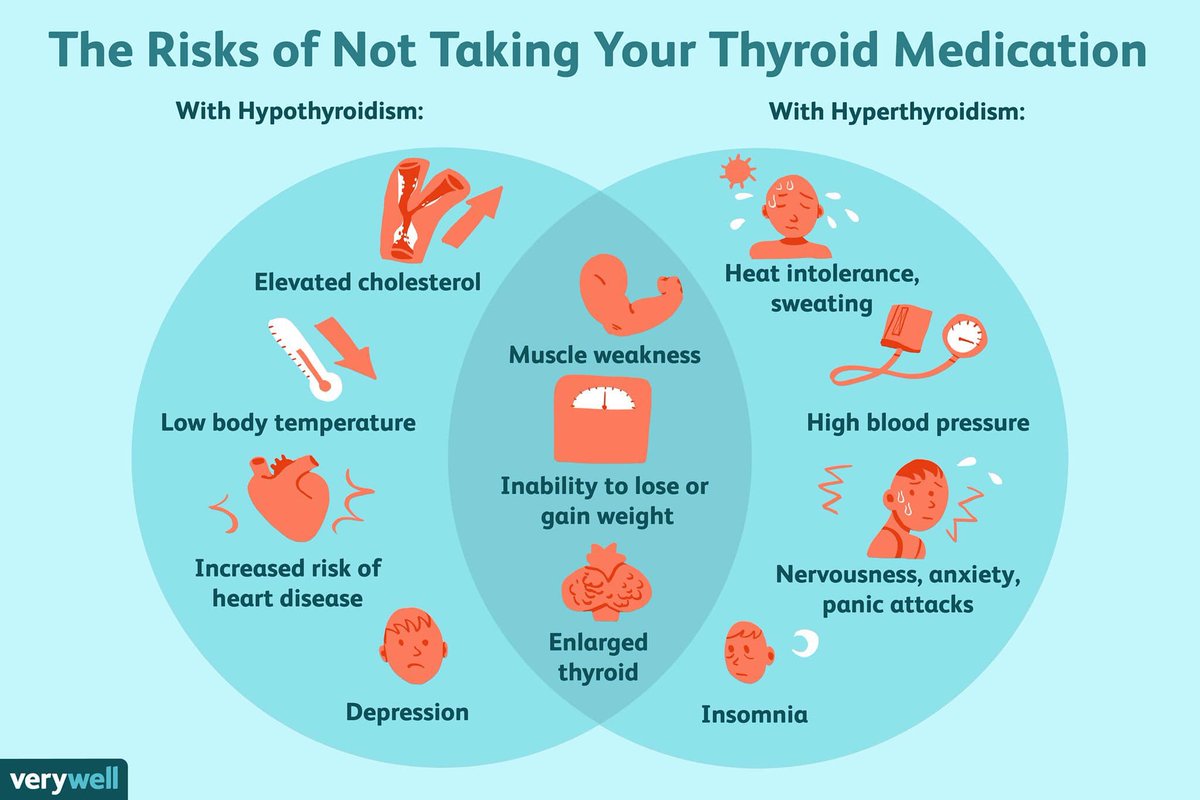 In the case of a combination of an elevated TSH level and a high titer of anti-TPO antibodies, the rate of progression was 4.5% per year, and overt hypothyroidism was diagnosed in 55% of patients after 20 years of follow-up [3]. In addition to antibodies, the rate of progression of SKGT to the manifest one depends on the initial level of TSH, which was detected during the initial examination. Thus, Huber G. showed that if the TSH level was initially > 12 mU/l, then more than 75% of women within 10 years moved into the group of overt hypothyroidism, whereas with an initial increase in the TSH level to 6 mU/l, the level of thyroid hormones remained in within normal values [12]. Thus, an elevated titer of antithyroid antibodies and an initial level of TSH >10 mU/l are risk factors for accelerated progression of SHT to overt hypothyroidism.
In the case of a combination of an elevated TSH level and a high titer of anti-TPO antibodies, the rate of progression was 4.5% per year, and overt hypothyroidism was diagnosed in 55% of patients after 20 years of follow-up [3]. In addition to antibodies, the rate of progression of SKGT to the manifest one depends on the initial level of TSH, which was detected during the initial examination. Thus, Huber G. showed that if the TSH level was initially > 12 mU/l, then more than 75% of women within 10 years moved into the group of overt hypothyroidism, whereas with an initial increase in the TSH level to 6 mU/l, the level of thyroid hormones remained in within normal values [12]. Thus, an elevated titer of antithyroid antibodies and an initial level of TSH >10 mU/l are risk factors for accelerated progression of SHT to overt hypothyroidism.
Clinical manifestations of SGTS
Given the name – “subclinical hypothyroidism” is not expected to have clinical manifestations in the patient. However, given the non-specificity and multiplicity of manifestations of hypothyroidism, it should be noted that certain symptoms can be found both in a patient with HCS and in persons who do not suffer from any thyroid diseases. On the other hand, if we accept the hypothesis that the level of TSH rises due to a decrease in the level of thyroid hormones below the “individual norm”, then patients may develop symptoms of hypothyroidism. But in this case, it is no longer subclinical, but obvious hypothyroidism, the criteria for which do not yet fit into accepted standards. In particular, in the Colorado study, it was found that symptoms such as dry skin, fatigue, weight gain, swelling of the face, poor cold tolerance, and memory impairment were more common in patients with SCHT. That is, from the above point of view, the use of the term “subclinical” in the name of the disease is not entirely justified [2]. In this regard, W.M. Wiersinga proposed to single out the 1st degree of hypothyroidism instead of subclinical [13].
However, given the non-specificity and multiplicity of manifestations of hypothyroidism, it should be noted that certain symptoms can be found both in a patient with HCS and in persons who do not suffer from any thyroid diseases. On the other hand, if we accept the hypothesis that the level of TSH rises due to a decrease in the level of thyroid hormones below the “individual norm”, then patients may develop symptoms of hypothyroidism. But in this case, it is no longer subclinical, but obvious hypothyroidism, the criteria for which do not yet fit into accepted standards. In particular, in the Colorado study, it was found that symptoms such as dry skin, fatigue, weight gain, swelling of the face, poor cold tolerance, and memory impairment were more common in patients with SCHT. That is, from the above point of view, the use of the term “subclinical” in the name of the disease is not entirely justified [2]. In this regard, W.M. Wiersinga proposed to single out the 1st degree of hypothyroidism instead of subclinical [13].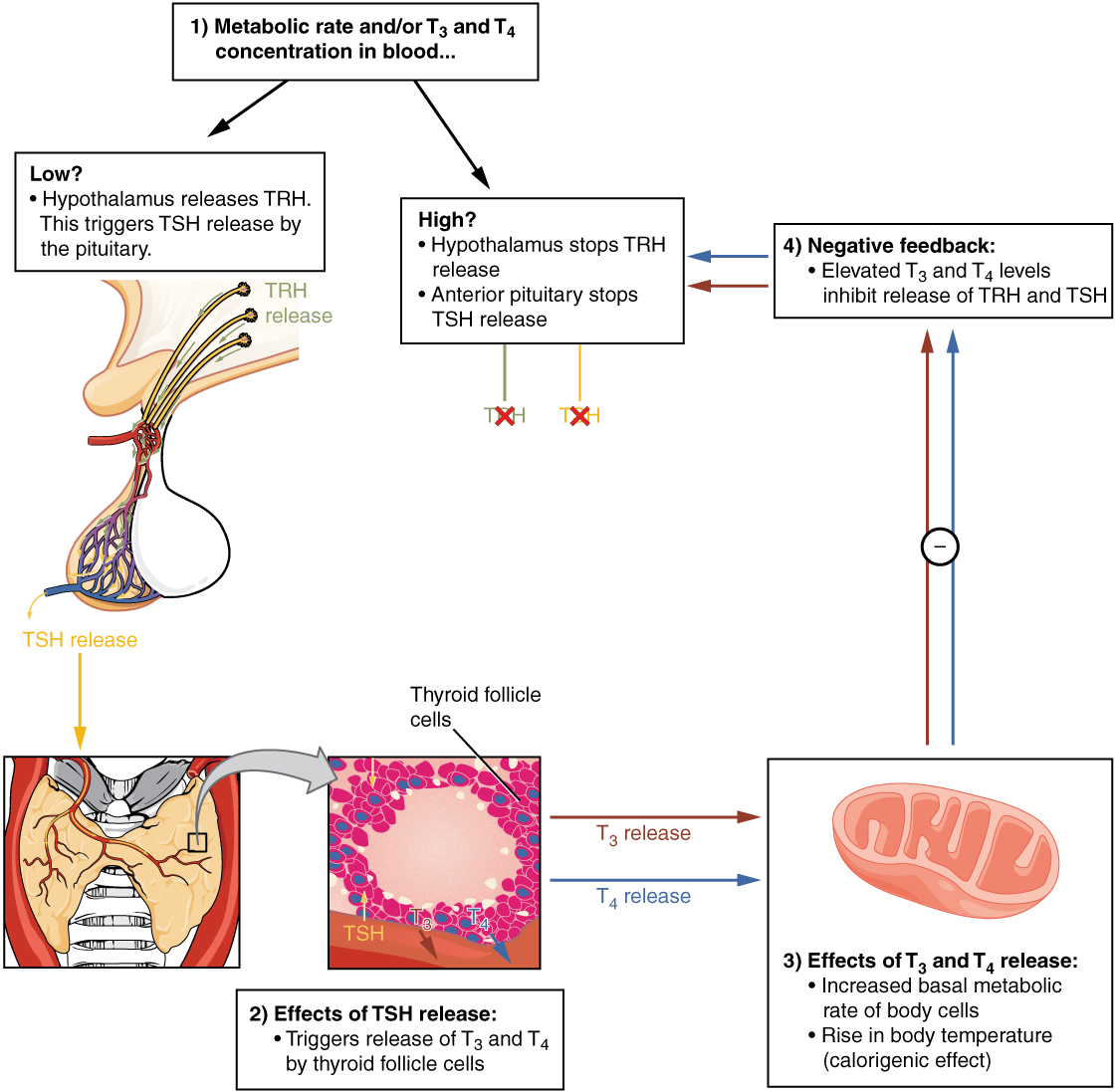 With SCGT in young people, the characteristic symptoms detected are easier to attribute to manifestations of hypothyroidism than in the elderly, in whom even signs of age “simulate” the clinic of hypothyroidism (weakness, lethargy, dry skin, etc.).
With SCGT in young people, the characteristic symptoms detected are easier to attribute to manifestations of hypothyroidism than in the elderly, in whom even signs of age “simulate” the clinic of hypothyroidism (weakness, lethargy, dry skin, etc.).
SKGT and cardiovascular system
Of particular interest is the effect of SHRT on the development and course of cardiovascular disease (CVD). Data from individual studies on the effect of SKGT on the lipid profile are contradictory. However, a meta-analysis confirmed the relationship between TSH and cholesterol levels, and an increase in TSH levels is accompanied by an increase in atherogenic lipid fractions, which contributes to the development and progression of atherosclerosis [14]. It has been shown that the appointment of replacement therapy for HCS leads to a decrease in lipid levels by 5–7%, which, in turn, is accompanied by a 15% reduction in the risk of cardiovascular events [15].
Over the past 10 years, several studies have been published that have demonstrated an association of SHT and CV events, including CV mortality. In a meta-analysis by N. Rodondi, which combined data from more than 55 thousand. patients, it was found that the risk of CVD and mortality correlated with the level of TSH. The risk increased in patients with TSH>7 mU/l, and with TSH 10.0–19.9 mU/l, the risk of developing CVD was increased by 1.89 times (95% CL 1.28–2.8), and the risk cardiovascular mortality – 1.58 times (95% CL 1.1–2.27) [16]. S. McQuade revealed the dependence of the risk of cardiovascular events not only on the degree of increase in TSH, but also on the age of the patient. According to his study, in the group of patients with SCHT and overt hypothyroidism, cardiovascular events were statistically more common, and differences from the control group were found only in patients younger than 65 years [17]. Thus, to date, quite a lot of data has been accumulated on the negative effect of SHRT on the cardiovascular system and an increase in mortality from cardiovascular events in patients with elevated TSH levels. On the other hand, data on the positive effect of substitution therapy on mortality is clearly not enough.
In a meta-analysis by N. Rodondi, which combined data from more than 55 thousand. patients, it was found that the risk of CVD and mortality correlated with the level of TSH. The risk increased in patients with TSH>7 mU/l, and with TSH 10.0–19.9 mU/l, the risk of developing CVD was increased by 1.89 times (95% CL 1.28–2.8), and the risk cardiovascular mortality – 1.58 times (95% CL 1.1–2.27) [16]. S. McQuade revealed the dependence of the risk of cardiovascular events not only on the degree of increase in TSH, but also on the age of the patient. According to his study, in the group of patients with SCHT and overt hypothyroidism, cardiovascular events were statistically more common, and differences from the control group were found only in patients younger than 65 years [17]. Thus, to date, quite a lot of data has been accumulated on the negative effect of SHRT on the cardiovascular system and an increase in mortality from cardiovascular events in patients with elevated TSH levels. On the other hand, data on the positive effect of substitution therapy on mortality is clearly not enough. S. Razvi in a prospective study showed a reduction in the risk of cardiovascular events in a group of relatively young patients with HCS after the appointment of replacement therapy (HR0.61, 95% CI, 0.39–0.95) [18].
S. Razvi in a prospective study showed a reduction in the risk of cardiovascular events in a group of relatively young patients with HCS after the appointment of replacement therapy (HR0.61, 95% CI, 0.39–0.95) [18].
With the help of instrumental methods of examining patients with SCHT, an association of elevated TSH levels and diastolic dysfunction, decreased left ventricular tension in systole, increased peripheral vascular resistance, and endothelial dysfunction were revealed [19]. Interventional studies have shown that these indicators improved after the treatment of SCHT [20]. But at present, there is not enough data confirming the reverse development of the identified changes against the background of substitution therapy.
Since fluid retention and impaired systolic and diastolic functions of the left ventricle are observed in the hypofunction of the thyroid gland, it is natural to study the relationship between SHT and heart failure, although the exact mechanisms of the development and progression of heart failure against the background of SHG have not been fully studied.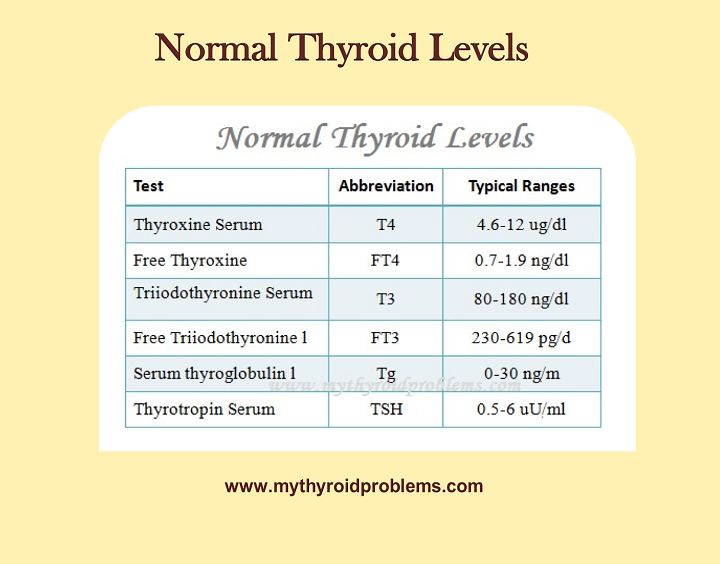 A large cohort study showed that persistence of elevated TSH levels was associated with a high risk of developing heart failure for 3 years in a group of patients with CVD risk factors. A particularly high risk of progression of heart failure and mortality from it was found in patients with SCHT in old age (over 80 years) with a history of hospitalization for heart failure [21]. C. Rhee showed an increase in cardiovascular mortality in patients with HCS and heart failure (OR 1.44 (95% CI 1.01–2.06), p=0.03), while in its absence there were no differences from the group with normal thyroid function [22].
A large cohort study showed that persistence of elevated TSH levels was associated with a high risk of developing heart failure for 3 years in a group of patients with CVD risk factors. A particularly high risk of progression of heart failure and mortality from it was found in patients with SCHT in old age (over 80 years) with a history of hospitalization for heart failure [21]. C. Rhee showed an increase in cardiovascular mortality in patients with HCS and heart failure (OR 1.44 (95% CI 1.01–2.06), p=0.03), while in its absence there were no differences from the group with normal thyroid function [22].
MSGT and cognition
Data on the effect of SKGT on cognitive function are largely contradictory. With regard to depression, memory loss, a negative effect was found only in overt hypothyroidism. However, a systematic review and meta-analysis published in 2015 by G. Pasqualetti showed an increase in the risk of dementia in patients with HCS younger than 75 years (OR 1. 81 (95% CI1.43–2.28), p<0.01). In the analysis of 13 studies without exclusion of patients of senile age, no statistically significant differences were obtained. This confirms the fact that the effect of SCGT on the state of health and life expectancy depends on the patient's age, so age should be taken into account when developing a doctor's tactics [23].
81 (95% CI1.43–2.28), p<0.01). In the analysis of 13 studies without exclusion of patients of senile age, no statistically significant differences were obtained. This confirms the fact that the effect of SCGT on the state of health and life expectancy depends on the patient's age, so age should be taken into account when developing a doctor's tactics [23].
SGTS and pregnancy
Thyroid dysfunction affects a woman’s fertility and the course of pregnancy. Hypothyroidism causes a violation of the ovulation process, reduces the synthesis of progesterone, which reduces the likelihood of pregnancy [4]. In this regard, the study of the level of TSH is included in the plan for examining women with infertility. If pregnancy does occur, then uncompensated hypothyroidism affects its course and the development of the fetus. Despite the fact that there is no pronounced decrease in thyroid function with SCHT, studies have proven the pathological effect of SCHT on the course of pregnancy. Women with SCHT have an increased risk of intrauterine fetal death – OR 1.26 (95%CL 1.1; 1.44), preterm birth – OR1.96 (95% CL 1.4; 2.73), other complications (eclampsia, gestational diabetes mellitus) – OR 1.69 (95% CL 1.27; 2.43) [24]. Long-term psychoneurological consequences for a child developing in conditions of elevated TSH levels were demonstrated by J.E. Haddow in 1999. He found a decrease in IQ by 7 points in children compared with the control group, and IQ <85 points was significantly more common than in the control group [25]. Research by J.H. Lazarus in 2012 did not reveal a positive effect of compensation for subclinical hypothyroidism, diagnosed using the new TSH standards for pregnant women, on the neuropsychiatric development of children born at the age of 3 years. In the group with compensation for subclinical hypothyroidism, the IQ of children did not differ from the IQ in the untreated group (99.2 and 100 points, p=0.04). Also, there were no differences in the number of children with an IQ of less than 85 points in the study and control groups (12.
Women with SCHT have an increased risk of intrauterine fetal death – OR 1.26 (95%CL 1.1; 1.44), preterm birth – OR1.96 (95% CL 1.4; 2.73), other complications (eclampsia, gestational diabetes mellitus) – OR 1.69 (95% CL 1.27; 2.43) [24]. Long-term psychoneurological consequences for a child developing in conditions of elevated TSH levels were demonstrated by J.E. Haddow in 1999. He found a decrease in IQ by 7 points in children compared with the control group, and IQ <85 points was significantly more common than in the control group [25]. Research by J.H. Lazarus in 2012 did not reveal a positive effect of compensation for subclinical hypothyroidism, diagnosed using the new TSH standards for pregnant women, on the neuropsychiatric development of children born at the age of 3 years. In the group with compensation for subclinical hypothyroidism, the IQ of children did not differ from the IQ in the untreated group (99.2 and 100 points, p=0.04). Also, there were no differences in the number of children with an IQ of less than 85 points in the study and control groups (12.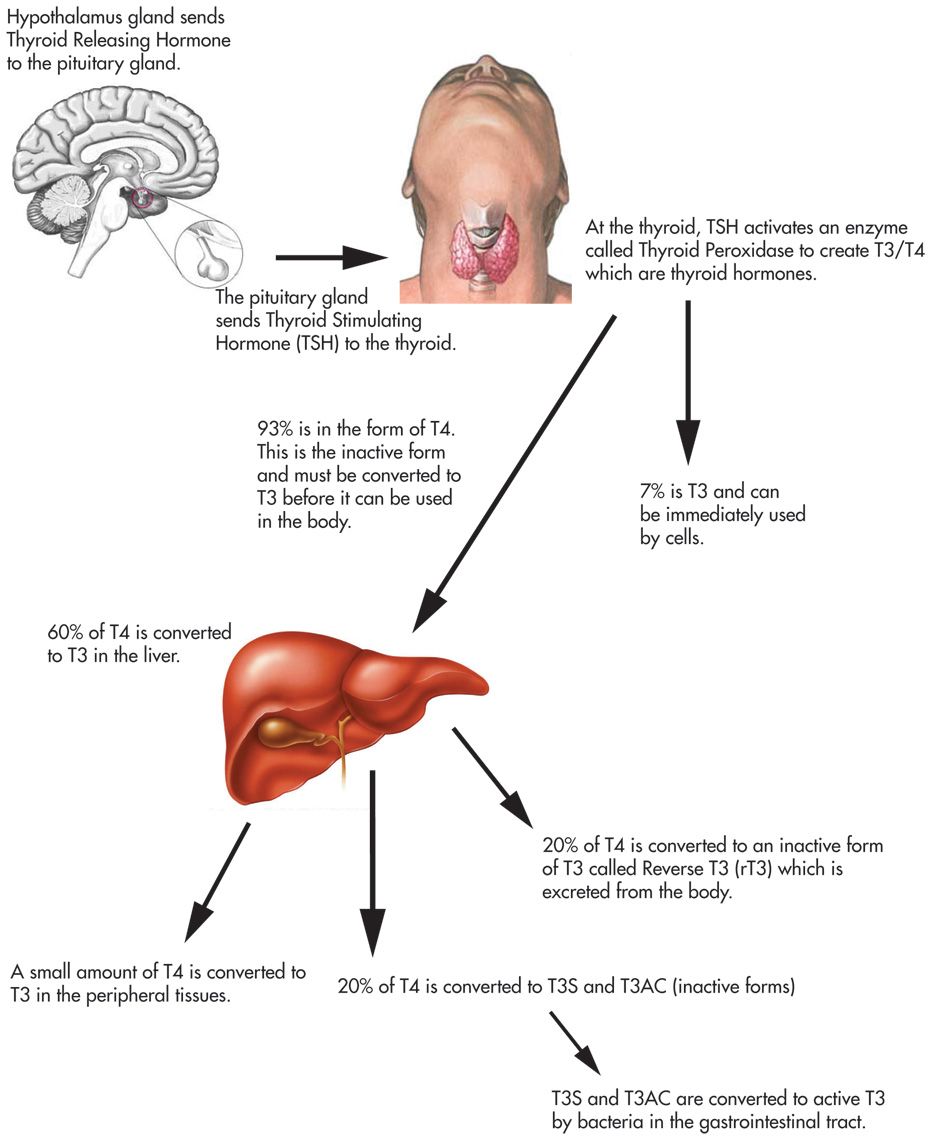 1% vs 14.1%, p=0.39) [26]. Taking into account the negative impact of SKGT on the course of pregnancy and the formation of the central nervous system of the fetus, an urgent appointment of replacement therapy is indicated for all pregnant women with elevated TSH levels above the trimester-specific norm.
1% vs 14.1%, p=0.39) [26]. Taking into account the negative impact of SKGT on the course of pregnancy and the formation of the central nervous system of the fetus, an urgent appointment of replacement therapy is indicated for all pregnant women with elevated TSH levels above the trimester-specific norm.
Choice of management tactics for patients with SCHT
Since in some cases SCGT is a reversible condition, it is necessary to ascertain the persistence of the identified laboratory changes. In this regard, the diagnosis and further tactics are established after a repeated study of thyroid hormones. After confirming the diagnosis of SCGT, the doctor in each individual case must decide on the observation or treatment of the patient. An absolute indication for treatment is pregnancy or its planning. Moreover, in the case of pregnancy planning, the target TSH level will be the normal range of TSH levels for the first trimester of pregnancy. It must be remembered that during pregnancy, the upper limit of normal TSH levels is lower than in the general population [27].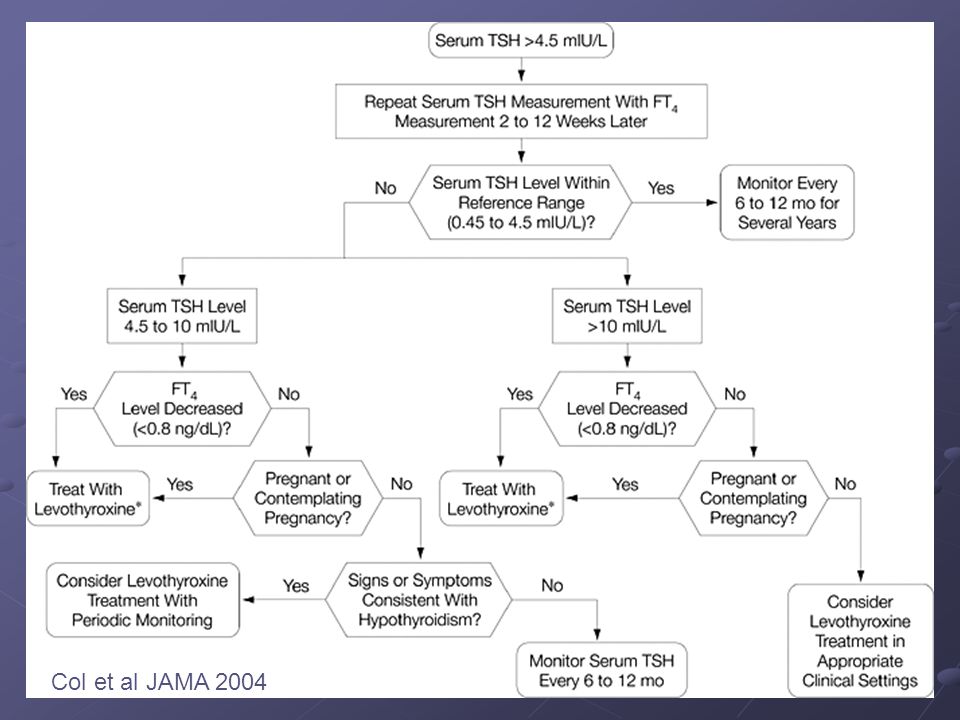 Therefore, those women who, outside of pregnancy, the level of TSH corresponded to normal values, are also subject to treatment. For example, a TSH level of 3.5 mU/L is normal for a woman outside of pregnancy, but is regarded as SCGT in the first and second trimesters of pregnancy. In the case of SKGT (taking into account the special norms of TSH for pregnant women), the replacement dose of levothyroxine sodium (Eutiroks®, Merck) may be less than with overt hypothyroidism, and is 1.2 μg per 1 kg of body weight. However, if a TSH level >10 mU/l is detected, then the condition is regarded as overt hypothyroidism even with a normal level of free T4, and a full replacement dose of sodium levothyroxine (Eutirox®, Merck) is prescribed based on 2.3 mcg per 1 kg body weight [27, 28].
Therefore, those women who, outside of pregnancy, the level of TSH corresponded to normal values, are also subject to treatment. For example, a TSH level of 3.5 mU/L is normal for a woman outside of pregnancy, but is regarded as SCGT in the first and second trimesters of pregnancy. In the case of SKGT (taking into account the special norms of TSH for pregnant women), the replacement dose of levothyroxine sodium (Eutiroks®, Merck) may be less than with overt hypothyroidism, and is 1.2 μg per 1 kg of body weight. However, if a TSH level >10 mU/l is detected, then the condition is regarded as overt hypothyroidism even with a normal level of free T4, and a full replacement dose of sodium levothyroxine (Eutirox®, Merck) is prescribed based on 2.3 mcg per 1 kg body weight [27, 28].
In the absence of pregnancy, the question of the treatment of SCGT is decided individually. First of all, it is necessary to take into account the age of the patient. In elderly and senile patients, expectant tactics are used, since there are no data proving the positive effect of substitution therapy on life expectancy in this category of patients. Only in patients with a TSH level >10 mU/l in combination with heart failure, the question of prescribing therapy to reduce the risk of rehospitalization for heart failure and reduce mortality from it can be considered.
Only in patients with a TSH level >10 mU/l in combination with heart failure, the question of prescribing therapy to reduce the risk of rehospitalization for heart failure and reduce mortality from it can be considered.
In patients of middle and young age, the doctor should assess the presence of complaints typical of hypothyroidism, elevated titer of antithyroid antibodies, risk factors for CVD and the initial level of TSH. In case of complaints, given their non-specificity, it is possible to conduct a trial treatment with levothyroxine sodium (Eutirox®) for 3 months. to assess their relationship with elevated TSH levels. If after the normalization of the level of TSH the symptoms persist, then it is necessary to look for other causes of their occurrence. But in some patients (about 30%), the symptoms disappear on the background of substitution therapy. If risk factors for CVD, a high titer of antithyroid antibodies and an increase in the level of TSH> 10-12 mU/l are identified, the treatment is permanent, with a possible dose change as the intrinsic thyroid function decreases progressively.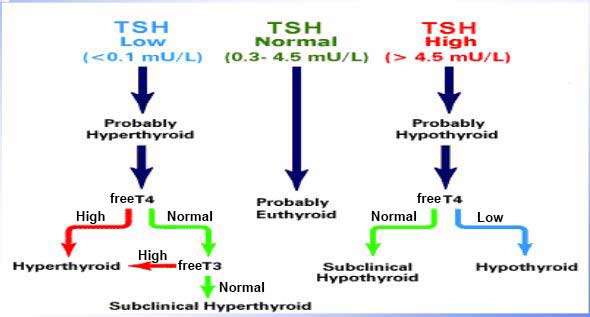 The dose of replacement therapy with levothyroxine sodium (Eutirox®) is calculated on the basis of 1.6 μg per 1 kg of body weight [28]. Evaluation of the effectiveness of treatment is based on determining the level of TSH, which should be within normal limits. In most cases, treatment begins with the appointment of the full calculated dose of levothyroxine sodium, with the exception of patients with coronary heart disease, for whom it will be safe to gradually increase the dose from 25 mcg / day.
The dose of replacement therapy with levothyroxine sodium (Eutirox®) is calculated on the basis of 1.6 μg per 1 kg of body weight [28]. Evaluation of the effectiveness of treatment is based on determining the level of TSH, which should be within normal limits. In most cases, treatment begins with the appointment of the full calculated dose of levothyroxine sodium, with the exception of patients with coronary heart disease, for whom it will be safe to gradually increase the dose from 25 mcg / day.
Thus, at present, SCGT can certainly be considered a disease, and not a laboratory phenomenon. The accumulated scientific data expand the indications for substitution therapy in patients with HCS. However, pregnancy (and its planning) is still an absolute indication for treatment, and in other cases the decision is made individually.
Autoimmune thyroiditis (hashimoto’s thyroiditis) – symptoms, causes, treatment
Thyroid gland and its role in the body
The thyroid gland is a small, butterfly-shaped organ located at the base of the front of the neck.
The gland produces hormones called thyroid hormones. These are TK (triiodothyronine) and T4 (thyroxine). They affect almost all important processes in the body, such as metabolism, maintaining weight, heart rate and body temperature, and the synthesis of certain vitamins.
Thyroid hormones (T3 and T4) have a great influence on all important processes in the body
If the thyroid gland produces an insufficient amount of hormones, this condition is called hypothyroidism , if it is excessive – hyperthyroidism (thyrotoxicosis) .
The thyroid gland is regulated by the pituitary gland, a pea-sized gland located at the base of the brain that synthesizes thyroid-stimulating hormone (TSH).
The interaction of the pituitary gland and the thyroid gland is arranged according to the principle of feedback. So, when the thyroid gland starts producing less T4 than usual, the level of TSH in the blood rises to stimulate the gland to work. And with an increase in the amount of T4, the level of TSH decreases.
And with an increase in the amount of T4, the level of TSH decreases.
Autoimmune thyroiditis
Autoimmune thyroiditis (Hashimoto’s thyroiditis, Hashimoto’s disease, chronic autoimmune thyroiditis, chronic lymphocytic thyroiditis) is a disease in which the immune system destroys healthy thyroid cells, mistaking them for pathogens. At the same time, the organ becomes inflamed and cannot fully function. As a result, less thyroid hormones are synthesized than needed for the needs of the body. This condition is called hypothyroidism.
The pathology was first described by the Japanese surgeon Hakaru Hashimoto in 1912. Therefore, the disease is also called Hashimoto’s thyroiditis, or Hashimoto’s disease / Photo source: Wellcome Library, London
Hashimoto’s thyroiditis is much more common (4-10 times) in women. As a rule, the disease develops when a person reaches the age of 30-50 years.
In the Tenth Revision of the International Statistical Classification of Diseases and Related Health Problems (ICD-10), autoimmune thyroiditis is coded E06. 3.
3.
Causes of autoimmune thyroiditis. Triggers
The exact causes of the disease are unknown. It is believed that Hashimoto’s thyroiditis develops due to a genetically determined defect in the behavior of lymphocytes – white blood cells that are normally responsible for immune defense against infections. As a result of a failure, lymphocytes begin to mistake thyroid cells for pathogens, attack and destroy them.
Patients with autoimmune thyroiditis often have a haplotype (a piece of DNA that is inherited from one of the parents) HLA-DR5. This fact confirms that the disease develops in people genetically predisposed to it.
At the same time, not all people prone to autoimmune thyroiditis will certainly get sick. In order for pathology to develop, in addition to genetic conditioning, other factors must also influence a person.
Factors provoking the development of autoimmune thyroiditis:
- stress;
- poor environmental conditions, exposure to radiation;
- viral, bacterial and fungal infections;
- long-term use of iodine-containing drugs.

Hashimoto’s disease is also often found in people with other autoimmune diseases.
Autoimmune diseases often associated with Hashimoto’s thyroiditis:
- celiac disease – inflammation of the mucous membrane of the small intestine when eating products containing gluten;
- systemic lupus erythematosus – connective tissue lesion;
- rheumatoid arthritis – inflammation of the joints;
- Sjögren’s syndrome – dryness of the mucous membranes, especially the eyes and mouth;
- type 1 diabetes mellitus – an increase in blood glucose levels due to a lack of insulin in case of destruction of pancreatic beta cells due to autoimmune aggression of the body.
Hashimoto’s thyroiditis is often associated with another autoimmune disease – celiac disease (gluten intolerance)
Classification of autoimmune thyroiditis
The disease can be classified according to several features.
According to the course of the disease and the size of the thyroid gland, the following types of autoimmune thyroiditis are distinguished:
- Latent . The disease practically does not manifest itself in any way (there is no pronounced clinical symptomatology), and only according to the test results, one can notice small deviations in the level of thyroid hormones from the norm. The thyroid gland may be slightly enlarged.
- Hypertrophic . This form of the disease is also called Hashimoto’s goiter because the thyroid gland enlarges. A goiter can be diffuse if the gland is enlarged evenly, nodular with an uneven increase in the gland with the formation of nodes, and diffuse-nodular when there are nodes in the thyroid gland, but the organ is evenly enlarged. In the blood, there can be both an excess (thyrotoxicosis) at the initial stage of the disease, and a lack (hypothyroidism) of hormones, which is always observed in the outcome of the disease.

- Atrophic . In this form of the disease, the thyroid gland, on the contrary, decreases in volume and produces less hormones than it needs (hypothyroidism).
According to the form of the course of the disease, characteristics and functions of the organ, the following types of autoimmune thyroiditis of the thyroid gland are distinguished:
- Autoimmune thyroiditis type I . It is divided into two subtypes: Ia – subclinical, Ib – goiter. In the subclinical form of iron, it is normal or slightly increased, elastic; hormone levels are normal. In the goiter form, the gland is slightly enlarged, more dense on palpation than usual; the level of hormones is normal or slightly reduced or increased, which does not significantly affect the patient’s well-being.
- Autoimmune thyroiditis type II . It is divided into two subtypes: IIa – hypertrophic, or classic, form of the disease and IIb – atrophic form of the disease.
 With a hypertrophic, or classic, form, the thyroid gland is large, dense, with a bumpy surface; the level of hormones is normal (infrequently), reduced (most often) or slightly increased (less often). In the atrophic form, the thyroid gland is normal in size or reduced; hormone levels are reduced.
With a hypertrophic, or classic, form, the thyroid gland is large, dense, with a bumpy surface; the level of hormones is normal (infrequently), reduced (most often) or slightly increased (less often). In the atrophic form, the thyroid gland is normal in size or reduced; hormone levels are reduced.
Stages of autoimmune thyroiditis
There are several stages of autoimmune thyroiditis.
- Euthyroid stage . The asymptomatic stage of the disease, which occurs without changes in the level of thyroid hormones.
- Stage of thyrotoxicosis (hashitoxicosis) . An important sign of this stage is an enlarged thyroid gland (goiter). On palpation, it can be found that the thyroid gland is of a dense heterogeneous structure. At this stage, due to autoimmune inflammation, partial breakdown of thyroid tissue already begins. At the same time, thyroid hormones previously synthesized by the gland are released into the blood in large quantities and their temporary excess occurs – thyrotoxicosis, or hashitoxicosis.

- Subclinical . At this stage, the destruction of the thyroid gland continues. There are fewer normal thyrocytes, which causes the gland to produce less thyroid hormones. However, the pituitary gland takes the blow: it increases the production of thyroid-stimulating hormone (TSH), due to which it stimulates the thyroid gland to work harder. As a result, the body manages to maintain normal levels of thyroid hormones.
- Stage of overt hypothyroidism . As autoimmune inflammation of the thyroid gland continues, it produces less thyroid hormone than the body needs to support physiological processes. Hypothyroidism develops – a lack of thyroid hormones – and the symptoms of the disease are clearly manifested.
It is important to remember that with autoimmune thyroiditis, the patient does not always consistently go through all stages of the disease. It often happens that Hashimoto’s thyroiditis proceeds for a long time with signs of only one of the stages – euthyroidism, thyrotoxicosis, subclinical or overt hypothyroidism.
An important sign of the thyrotoxic stage is enlargement of the thyroid gland (goiter)
Signs and symptoms of autoimmune thyroiditis
Whether symptoms of Hashimoto’s thyroiditis will appear and how much depends on the stage of the disease.
No symptoms at the euthyroid stage .
At the stage of thyrotoxicosis (hashitoxicosis) , due to the appearance of goiter, patients may complain of difficulty in swallowing, a feeling of pressure in the neck area, and hoarseness of voice. Laboratory signs: decrease in TSH level with normal T3 and T4 values (sometimes with elevated T4 levels).
No symptoms at subclinical stage . Laboratory signs: an increase in the level of TSH with a normal T4 value.
Symptoms at the stage of overt hypothyroidism, common for men and women:
- dry skin and hair, brittle nails;
- hair loss;
- sensitivity to cold;
- general and muscular weakness;
- drowsiness;
- decreased concentration;
- memory impairment;
- edema;
- constipation;
- overweight;
- joint pain;
- bradycardia – decreased heart rate;
- sometimes – depression.

In women, signs of autoimmune thyroiditis may include menstrual irregularities, painful and heavy menstruation, and difficulty conceiving. This is due to the close relationship between reproductive function and thyroid function. So, in case of violation of the thyroid gland in women, the process of ovulation and the normal development of pregnancy are disrupted.
In men, a sign of autoimmune thyroiditis can be problems with potency: with an excess or lack of thyroid hormones, the production of testosterone by the testicles, which affects sexual function, also decreases.
Laboratory signs at this stage: an increase in the level of TSH with a decrease in T3 and T4.
It is worth noting that all of the listed symptoms are nonspecific for autoimmune thyroiditis: they are characteristic of hypothyroidism, regardless of the reasons that caused this condition.
Course of illness
Thyrocytes – cells of the thyroid gland – produce thyroglobulin protein and thyroperoxidase enzyme. They are needed for the production of thyroid hormones – T3 (triiodothyronine) and T4 (thyroxine). But with Hashimoto’s thyroiditis, the immune system, due to a malfunction, begins to perceive thyroglobulin and thyroperoxidase as pathogens that need to be destroyed.
They are needed for the production of thyroid hormones – T3 (triiodothyronine) and T4 (thyroxine). But with Hashimoto’s thyroiditis, the immune system, due to a malfunction, begins to perceive thyroglobulin and thyroperoxidase as pathogens that need to be destroyed.
To stop the production of these putative pathogens, the immune system attacks the thyrocytes that produce them. For this, autoimmune antibodies to thyroglobulin (AT-TG) and thyroperoxidase (AT-TPO) are first produced. And then lymphocytes, immune blood cells, together with autoimmune antibodies, begin to destroy thyrocytes.
Due to a malfunction in the immune system, lymphocytes begin to attack thyroid cells
The site of destroyed thyroid cells is occupied by scar tissue. But it is non-functional: it cannot produce hormones. This means that as autoimmune inflammation progresses, the number of thyroid cells that work normally decreases. As a result, the level of thyroid hormones decreases and hypothyroidism occurs.
Autoimmune thyroiditis in children
Hashimoto’s thyroiditis is rare in children: the disease is detected in 0.17-2.3% of children. At the same time, if a child or teenager is diagnosed with hypothyroidism or non-toxic goiter (painless enlargement of the thyroid gland without inflammation and changes in hormone levels), autoimmune thyroiditis is almost certainly the cause.
As a rule, children over 4 years of age are susceptible to Hashimoto’s disease, and it is most often diagnosed in adolescents. Girls get sick more often than boys.
The following variants of the course of autoimmune thyroiditis in children are possible:
- Appearance of goiter on the background of euthyroidism — normal level of thyroid hormones.
- Transient thyrotoxicosis (hashitoxicosis). It is detected in less than 5% of children. It usually goes away without treatment in 3-5 months.
- Hypothyroidism. It is detected during the first examination in approximately 3-13% of children.
 Sometimes accompanied by goiter. Hypothyroidism can persist throughout life.
Sometimes accompanied by goiter. Hypothyroidism can persist throughout life.
Also, approximately 10-20% of children with euthyroidism due to an enlarged thyroid gland develop persistent hypothyroidism within 5 years after the disease is diagnosed.
Autoimmune thyroiditis and pregnancy
If a patient with autoimmune thyroiditis has a normal concentration of thyroid hormones, and a thyroid-stimulating hormone (TSH) level of up to 2.5 mU/l, the disease will not affect the ability to successfully become pregnant and give birth to a healthy child.
But if a woman has abnormal levels of hormones, then the risks during pregnancy increase significantly.
Possible complications:
- infertility,
- miscarriage,
- miscarriage,
- placental insufficiency,
- late toxicosis,
- preterm birth,
- bleeding after childbirth,
- fetal hypoxia,
- thyrotoxicosis in a newborn.

There is also evidence that mothers with untreated hypothyroidism in Hashimoto’s disease may have children with intellectual disabilities, autism, speech delay and other developmental disabilities.
Prognosis for autoimmune thyroiditis. Possible Complications
If autoimmune thyroiditis in a patient remains at the stage of euthyroidism, that is, the normal concentration of T3 and T4 hormones is maintained, then the disease is not dangerous and does not require treatment.
But in the case when the patient has already developed hypothyroidism, it is very important to start therapy in a timely manner. If the normal concentration of thyroid hormones in the blood is not restored, dangerous complications can occur.
Complications of autoimmune thyroiditis accompanied by hypothyroidism:
- reproductive disorders, including infertility;
- pronounced memory loss up to dementia;
- anemia – a decrease in the concentration of hemoglobin in the blood, which disrupts the supply of oxygen to organs and tissues;
- disorders in the work of the cardiovascular system: changes in heart rate; accumulation of fluid in the pericardial cavity – a membrane of connective tissue surrounding the heart; an increase in the level of “bad” cholesterol (LDL), which means an increase in the risk of developing atherosclerosis, heart attack and stroke;
- myxedematous coma is a condition that can develop due to long-term untreated hypothyroidism.
 In this case, the patient first feels drowsiness, then lethargy, and finally loses consciousness. Hypothermia, the use of sedatives, infection, and stress can provoke myxedematous coma. A patient in myxedematous coma requires urgent medical attention.
In this case, the patient first feels drowsiness, then lethargy, and finally loses consciousness. Hypothermia, the use of sedatives, infection, and stress can provoke myxedematous coma. A patient in myxedematous coma requires urgent medical attention.
Diagnosis of autoimmune thyroiditis
According to the clinical guidelines of the Russian Association of Endocrinologists, it is possible to confidently say that a patient has autoimmune thyroiditis only if the so-called major diagnostic signs are combined.
Major diagnostic features of autoimmune thyroiditis:
- Primary overt (with symptoms) or persistent subclinical (without symptoms) hypothyroidism or haschitoxicosis.
- Detection of antibodies to thyroid tissue.
- Ultrasound signs of autoimmune pathology.
If at least one of these signs is absent, the diagnosis is “autoimmune thyroiditis”
is probabilistic.
T3 free
400 ₽
Add to cart
T4 free
400 ₽
Add to cart
390 ₽
Add to cart
AT-TG (col. )
)
420 ₽
Add to cart
AT-TPO ( number)
400 ₽
Add to cart
Assessment of thyroid function
1,130 ₽
Add to cart
Cause of thyroid disease
780 ₽
Add to cart
Thyroid gland (screening)
1 910 ₽
Add to cart
Thyroid gland
Thyroid needle biopsy is not required to confirm the diagnosis of autoimmune thyroiditis. This method can only be used for differential diagnosis with thyroid cancer if thyroid nodules with a diameter of more than 1 cm are found.
Examination of thyroid punctures
560 ₽
Add to cart
Examination of thyroid gland punctates by liquid cytology BD ShurePath
1 680 ₽
Add to cart
It also makes no sense to monitor changes in the level of autoimmune antibodies in autoimmune thyroiditis: this will not help predict how the disease will develop.
Prevention and treatment of autoimmune thyroiditis
It is impossible today to stop the body’s autoimmune aggression against the thyroid gland: there are no such drugs with proven effectiveness. There are also no effective measures to prevent autoimmune thyroiditis.
There are also no effective measures to prevent autoimmune thyroiditis.
If a patient has autoimmune antibodies or ultrasound signs of autoimmune thyroiditis, but the thyroid gland continues to function normally (the main indicator is a normal TSH level), it is not advisable to prescribe treatment. Therapy can be recommended only if the thyroid gland is significantly enlarged.
If thyroid dysfunction is detected, hormone replacement therapy is indicated. Such treatment allows you to compensate for the partially lost function of the thyroid gland by taking a hormonal drug.
For hormone replacement therapy in autoimmune thyroiditis, drugs are used, the active ingredient of which is levothyroxine sodium – this is a synthetic form of the hormone thyroxine (T4).
For overt hypothyroidism (increased TSH levels and decreased T4 levels), levothyroxine sodium is usually prescribed at the rate of 1.6-1.8 mcg per 1 kg of the patient’s body weight.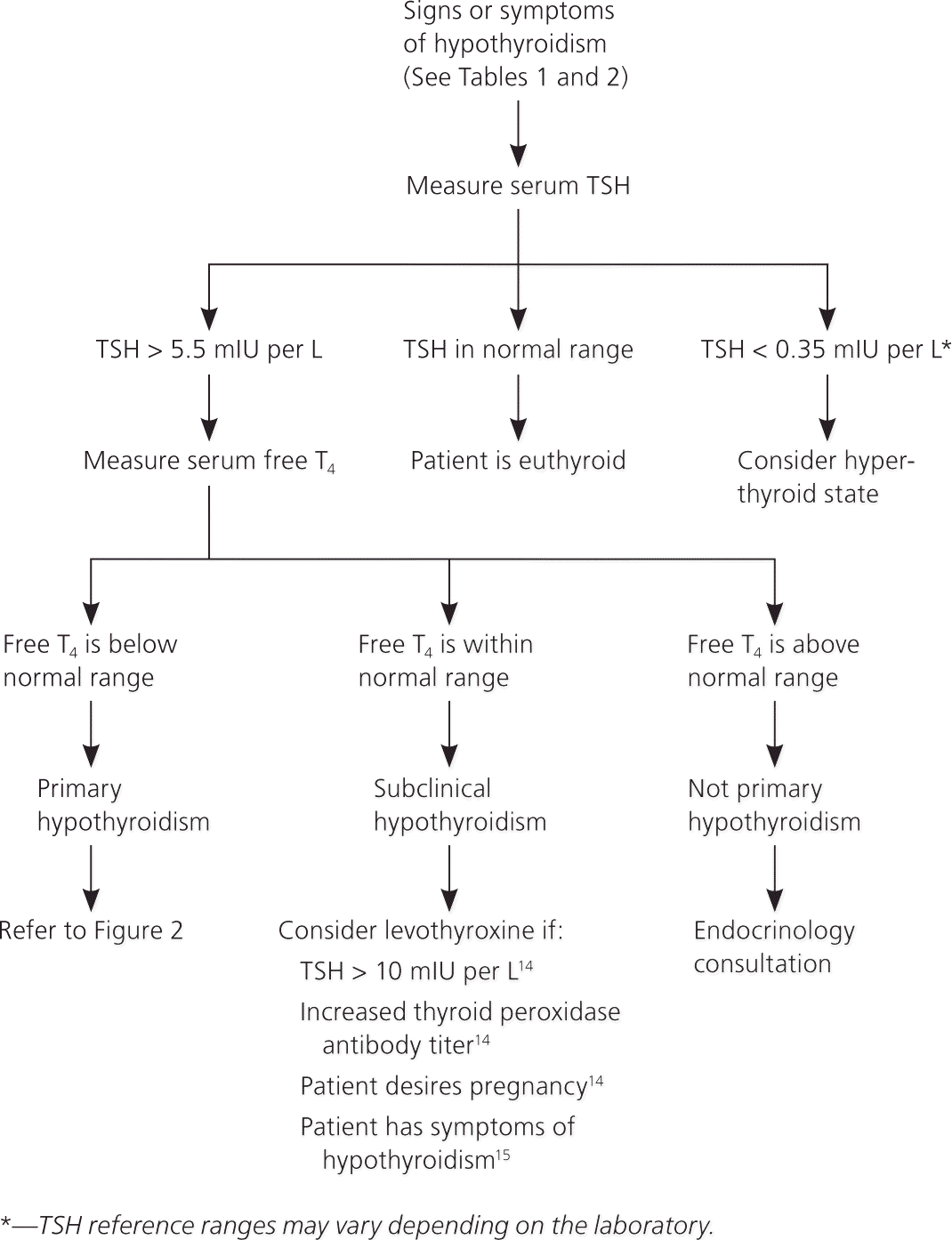
Subclinical hypothyroidism (increased TSH levels with normal T4 levels) is usually not treated immediately. First, a second (after 3-6 months) blood test for hormones is performed. If the results of such an analysis confirm a persistent dysfunction of the thyroid gland (TSH level above 10 mU/l or double detection of TSH level in the range of 5–10 mU/l), then hormone replacement therapy is prescribed. But if patients are over 55
years old and have cardiovascular disease, replacement therapy
prescribed only if the drug is well tolerated.
390 ₽
Add to cart
If subclinical hypothyroidism is detected in a pregnant woman , full dose replacement therapy is given immediately.
If autoimmune antibodies or ultrasound signs of autoimmune thyroiditis are detected in a woman planning a pregnancy, she will be advised to take a blood test for TSH and free T4 hormones to assess thyroid function. Such a study is carried out before conception and in each trimester of pregnancy.
T4 free
400 ₽
Add to cart
390 ₽
Add to cart
The treatment is considered effective when, thanks to the drug, it was possible to achieve a stable normal level of TSH in the blood.
Diet and lifestyle for autoimmune thyroiditis
Today there is no confirmed evidence that any diet affects the course of autoimmune thyroiditis. Therefore, the recommendations for patients with this disease are the same as for all people: eat a quality and varied diet, control stress levels, maintain moderate physical activity, get enough sleep.
Autoimmune nutrition protocol (autoimmune diet, autoimmune paleoprotocol) for Hashimoto’s disease
Some experts believe that with Hashimoto’s thyroiditis, it is worth adhering to the so-called autoimmune diet (autoimmune paleoprotocol, autoimmune nutrition protocol). This nutrition system is based on the idea of a “leaky” intestine – damage to the intestinal mucosa and the entry into the bloodstream of substances that normally remain in the intestine.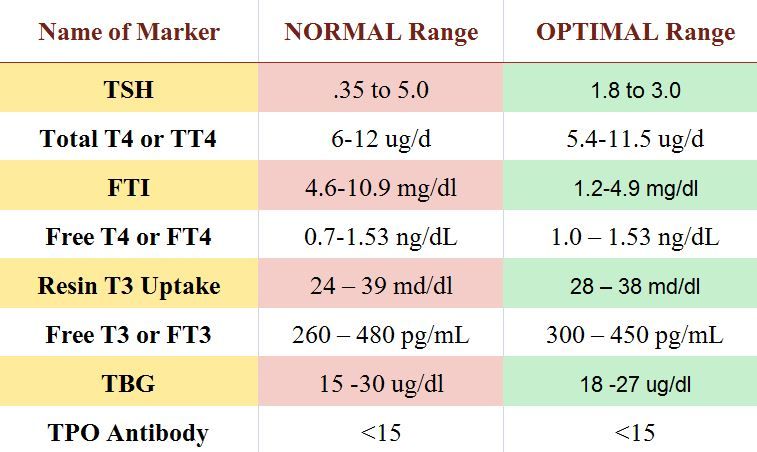 Then the immune system reacts to them and produces antibodies to them that attack the structures of the thyroid gland.
Then the immune system reacts to them and produces antibodies to them that attack the structures of the thyroid gland.
The purpose of the autoimmune diet is to patch up the gut and reduce autoimmune inflammation through proper nutrition
Permitted under this diet: meat, fish and seafood, vegetables (except nightshade: potatoes, eggplant, tomatoes, bell peppers), fruits, fermented foods, bone broths and herbs. Milk and soy, eggs, legumes, nuts and seeds, refined foods, sugar and sweeteners, canned food, coffee and alcohol are not recommended.
Such a diet can indeed optimize intestinal motility, however, due to the large number of restrictions, it can cause a deficiency of certain vitamins and minerals, such as calcium. And there are currently no convincing studies on the role of an autoimmune diet in the treatment of autoimmune thyroiditis.
Also, patients with autoimmune thyroiditis need to be careful when taking drugs with iodine. If iodine in some drugs is contained in a dose exceeding 1 mg per day, this can lead to the manifestation of hypothyroidism, that is, a decrease in the level of thyroid hormones.



 With a hypertrophic, or classic, form, the thyroid gland is large, dense, with a bumpy surface; the level of hormones is normal (infrequently), reduced (most often) or slightly increased (less often). In the atrophic form, the thyroid gland is normal in size or reduced; hormone levels are reduced.
With a hypertrophic, or classic, form, the thyroid gland is large, dense, with a bumpy surface; the level of hormones is normal (infrequently), reduced (most often) or slightly increased (less often). In the atrophic form, the thyroid gland is normal in size or reduced; hormone levels are reduced.

 Sometimes accompanied by goiter. Hypothyroidism can persist throughout life.
Sometimes accompanied by goiter. Hypothyroidism can persist throughout life.
:max_bytes(150000):strip_icc()/understanding-thyroid-blood-tests-low-or-high-tsh-3233198_color3-5b84c6f346e0fb00508bffb3.png) In this case, the patient first feels drowsiness, then lethargy, and finally loses consciousness. Hypothermia, the use of sedatives, infection, and stress can provoke myxedematous coma. A patient in myxedematous coma requires urgent medical attention.
In this case, the patient first feels drowsiness, then lethargy, and finally loses consciousness. Hypothermia, the use of sedatives, infection, and stress can provoke myxedematous coma. A patient in myxedematous coma requires urgent medical attention.